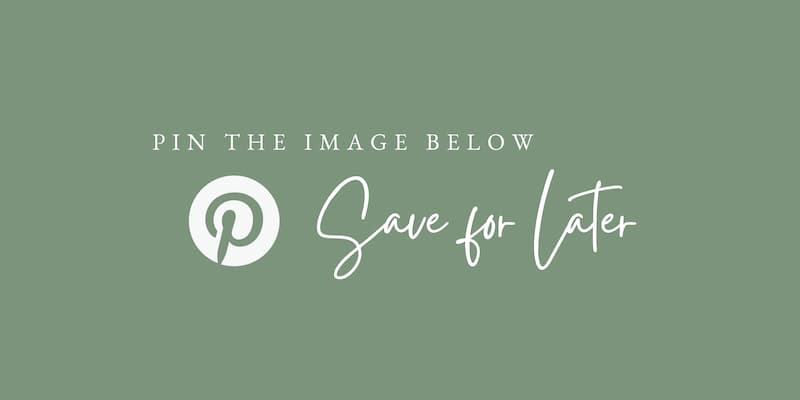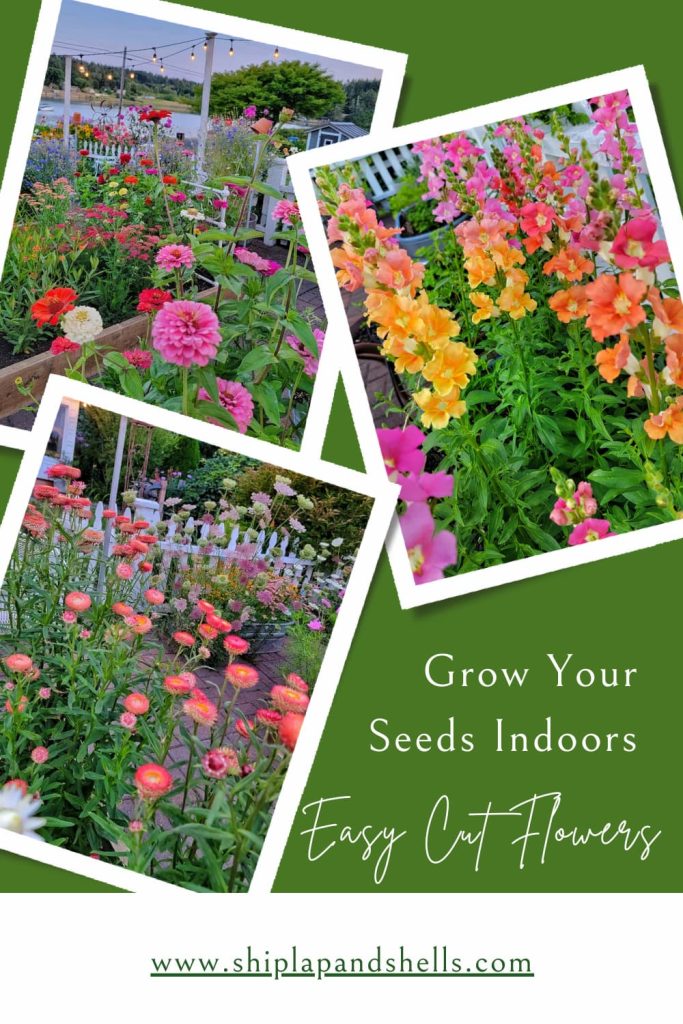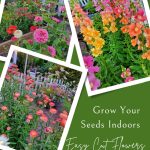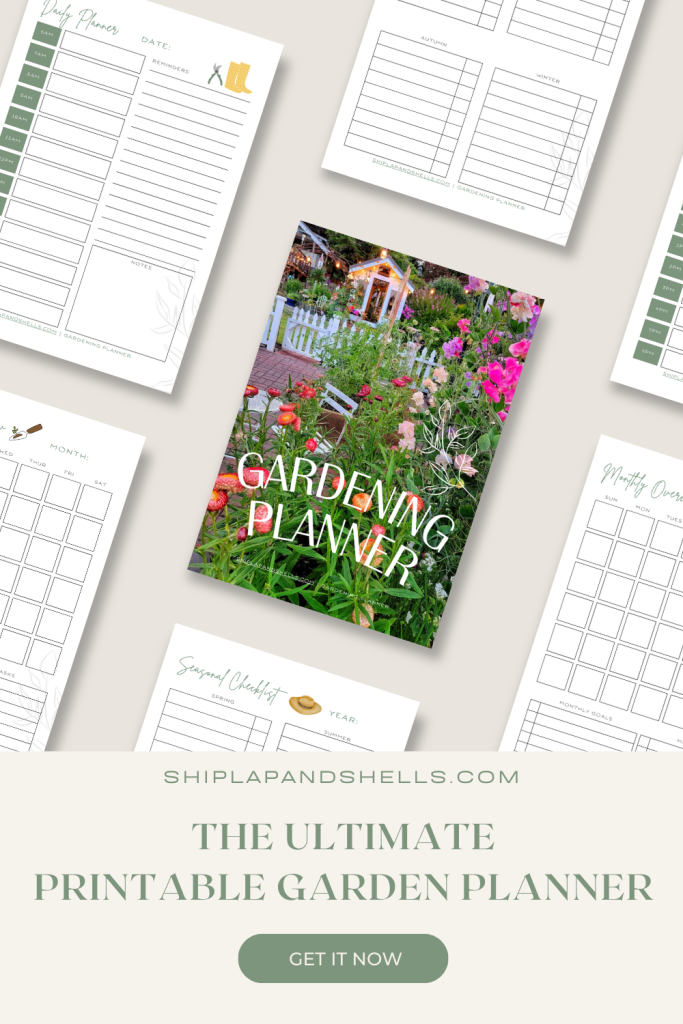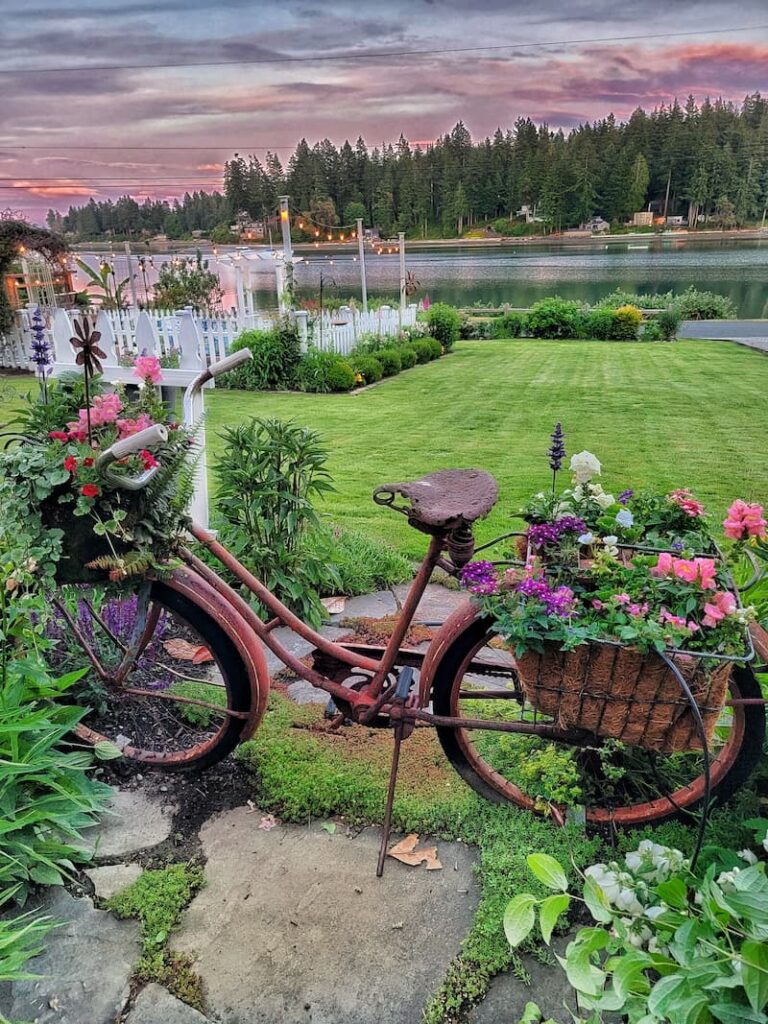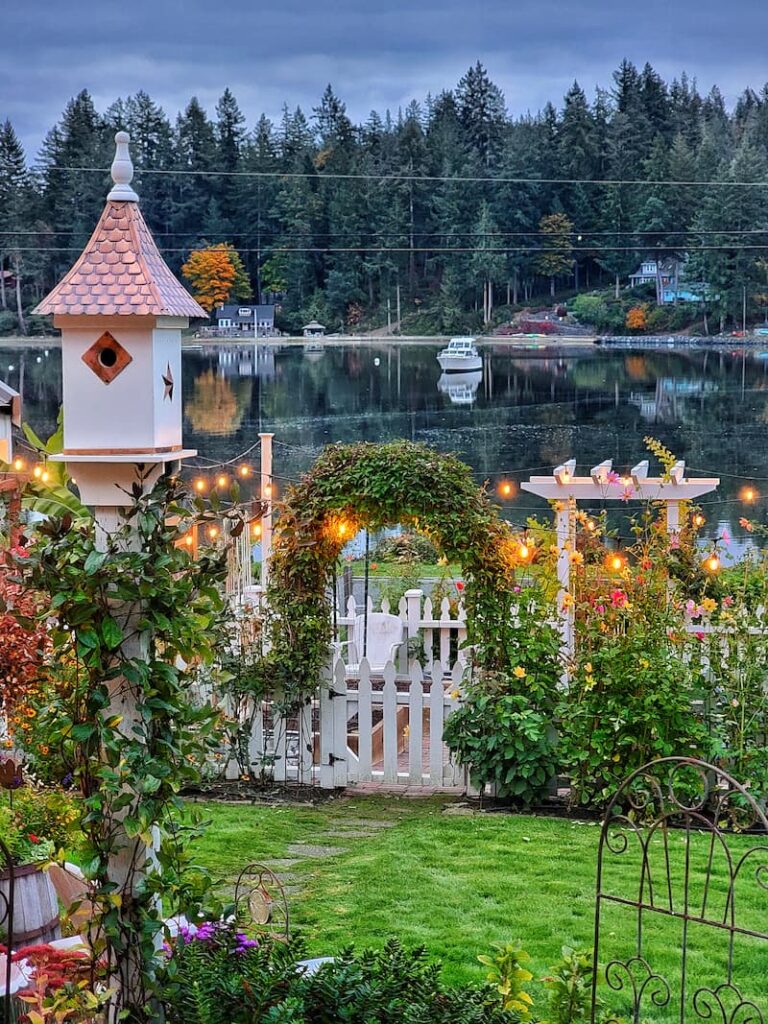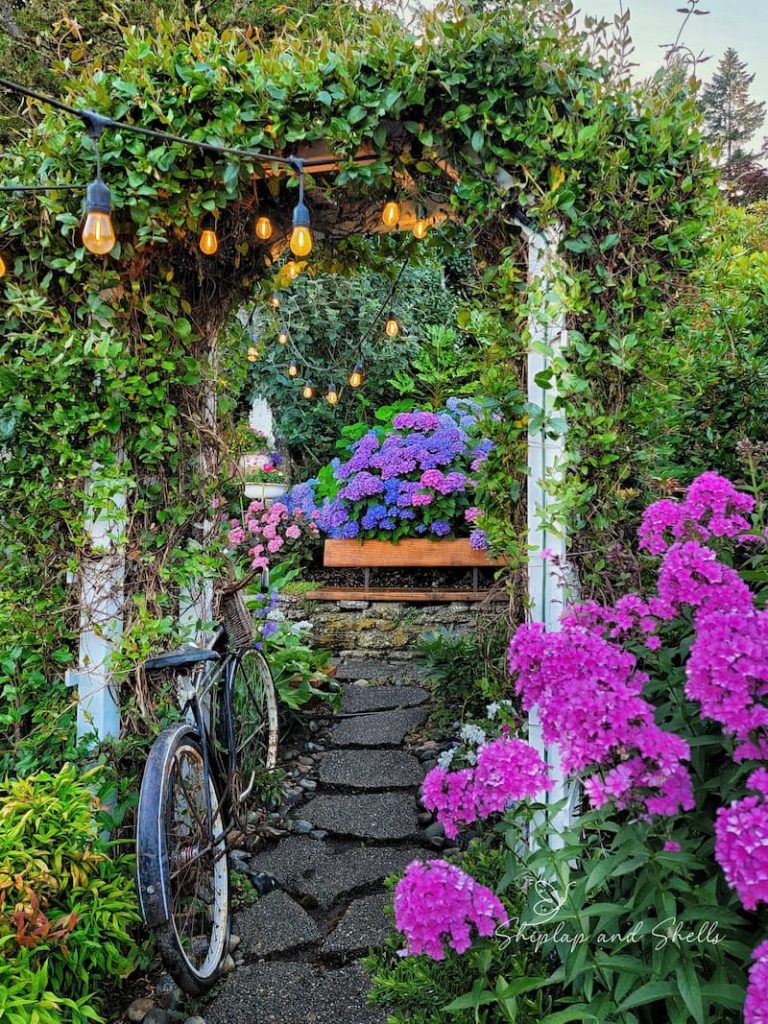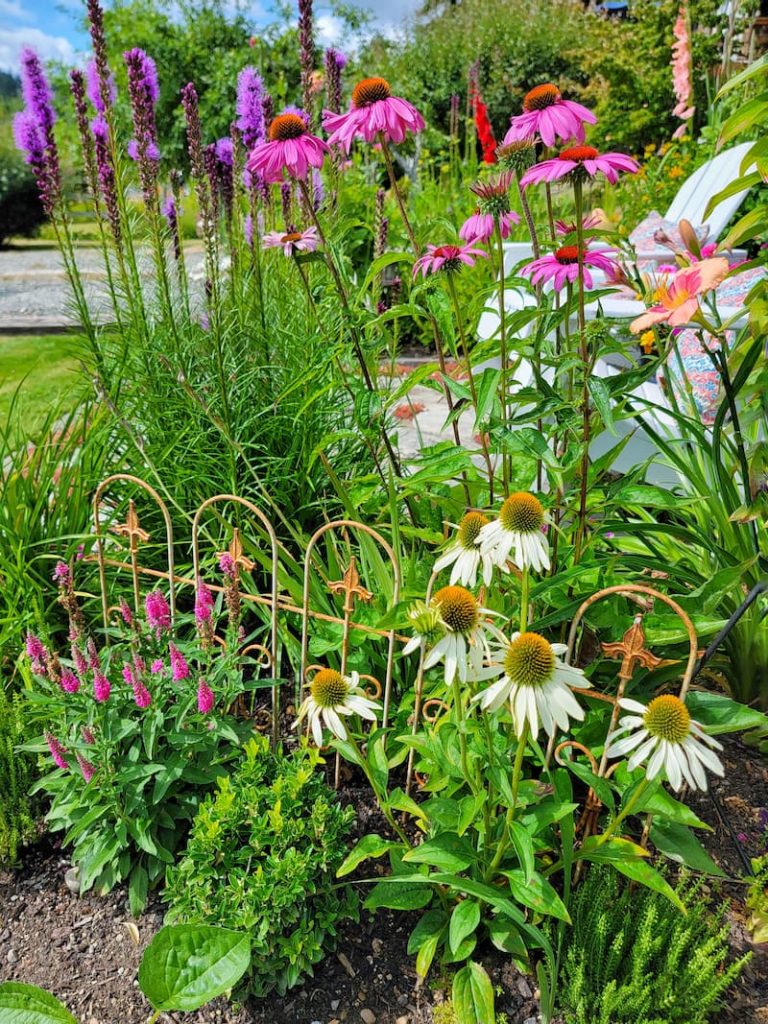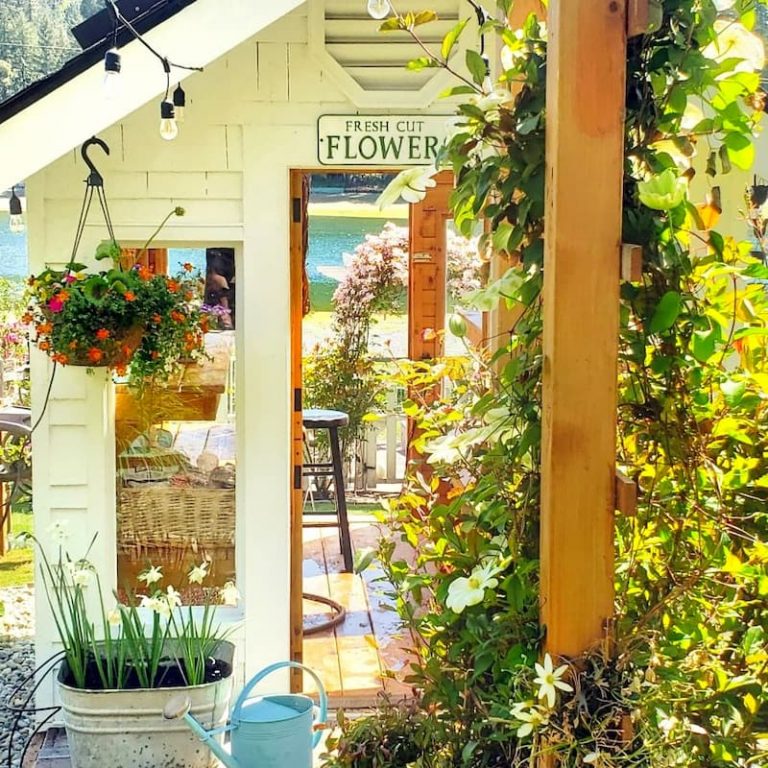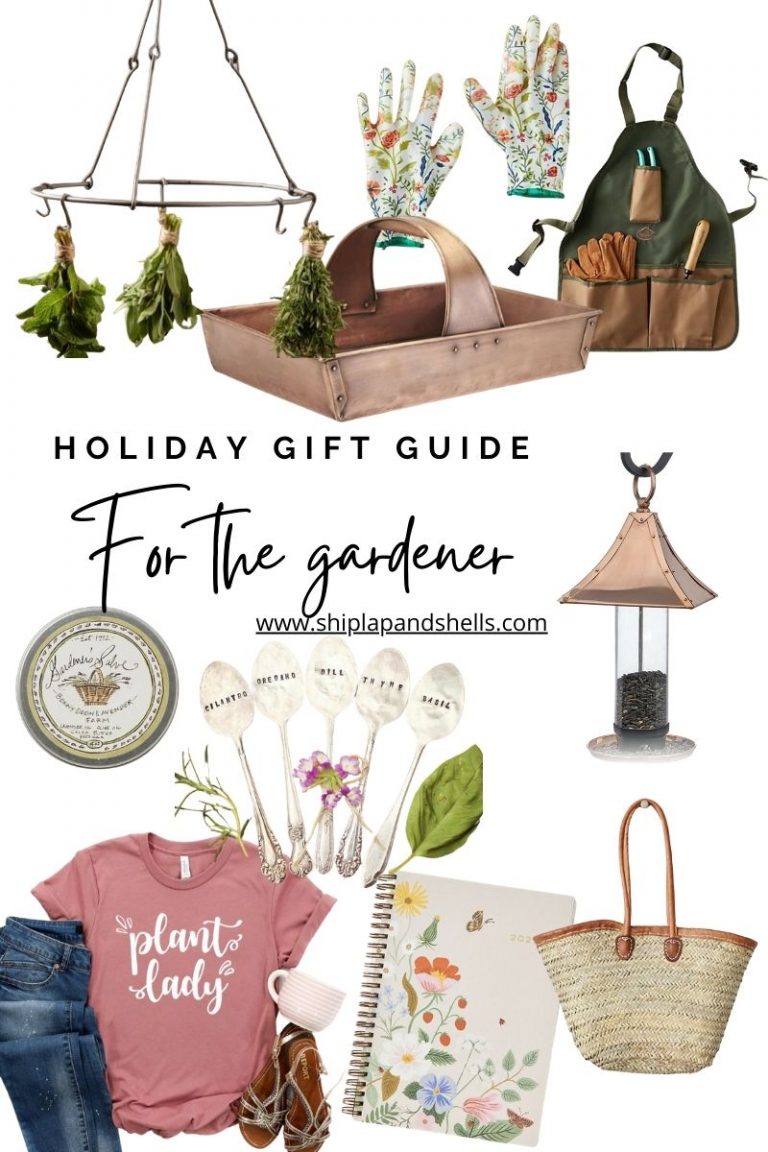Easy Cut Flowers to Grow Indoors from Seeds for Beginners
Are you considering growing a cut flower garden but want the process to be simple and fun? This guide will help you choose some of the easiest flowers to grow indoors from seed, giving you more time to enjoy your garden.
For beginners, growing flowers from seed can be gratifying. There’s something truly amazing about watching a single seed turn into the most stunning flower.
Follow along for tips on which cut flowers are the easiest to grow. This will give you more time and energy to enjoy your cut flower garden rather than work in it all the time!
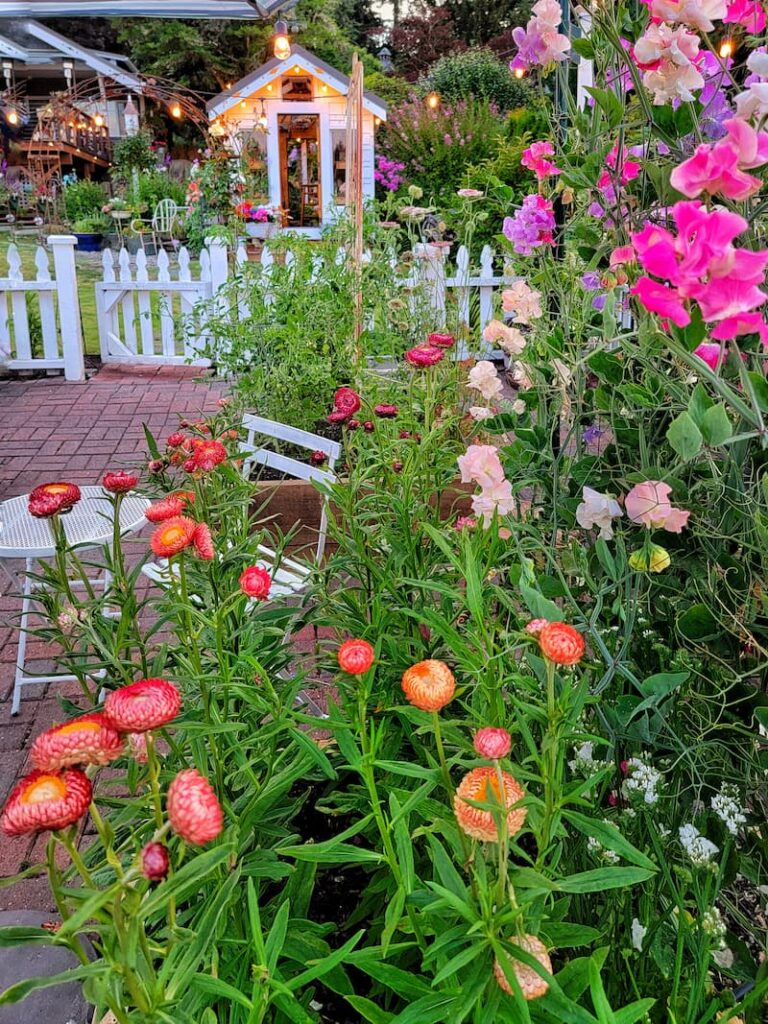
As an Amazon affiliate, I earn from qualifying purchases at no extra cost to you. My blog contains other affiliate links for your convenience as well. Click here to read my privacy policy.
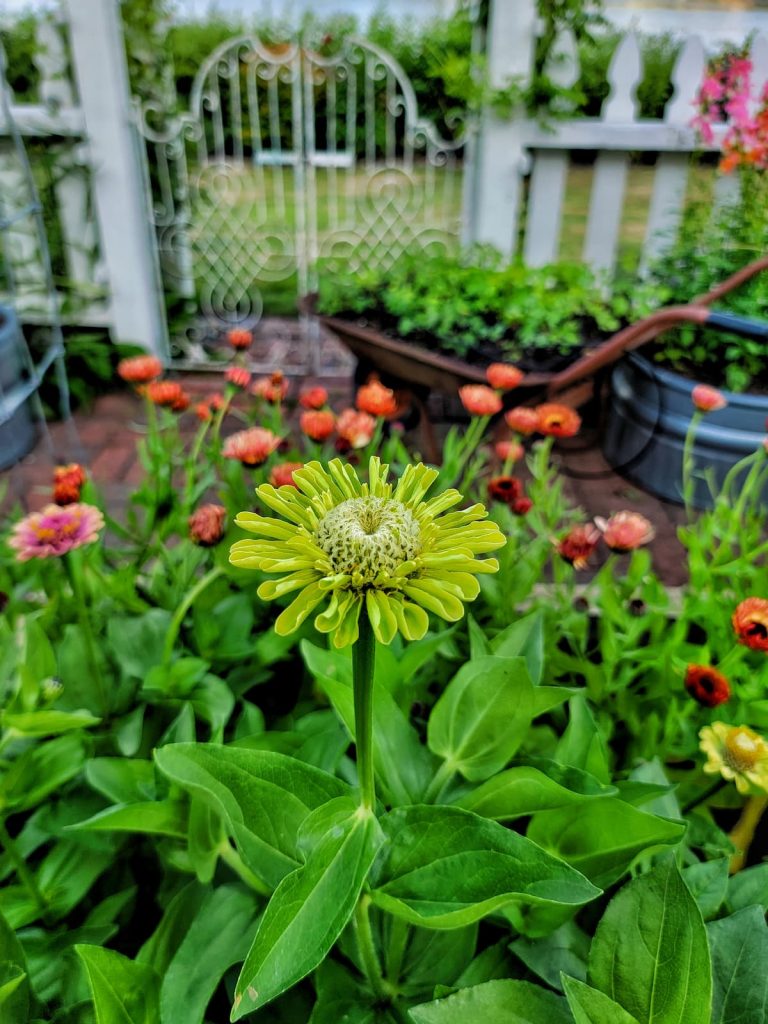
17 Best Flowers to Grow From Seed Indoors
Here is a list of the easiest flowers to grow from seed indoors. At least they have been for me.
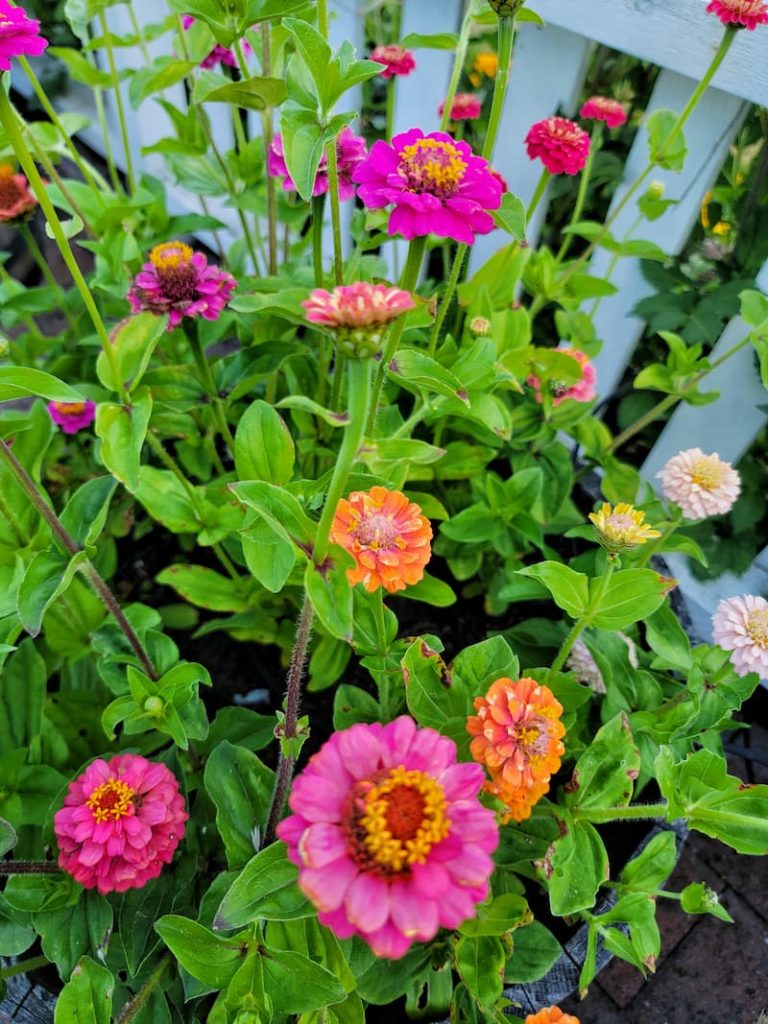
1. Zinnias
Zinnias are among the most cheerful and easy-to-grow flowers that beginners can start indoors from seed. They’re known for their rapid germination process, with zinnia seeds often sprouting within just 5 to 7 days after planting.
Once they start, zinnias bloom profusely throughout the late summer and into early fall.
When you decide to grow zinnias, there are many varieties of flowers to choose from. Pick from various colorful blooms, including pink, red, yellow, orange, white, and purple. They are a favorite among gardeners looking to add color to their landscapes.
How to Grow Beautiful Zinnias Indoors From Seed
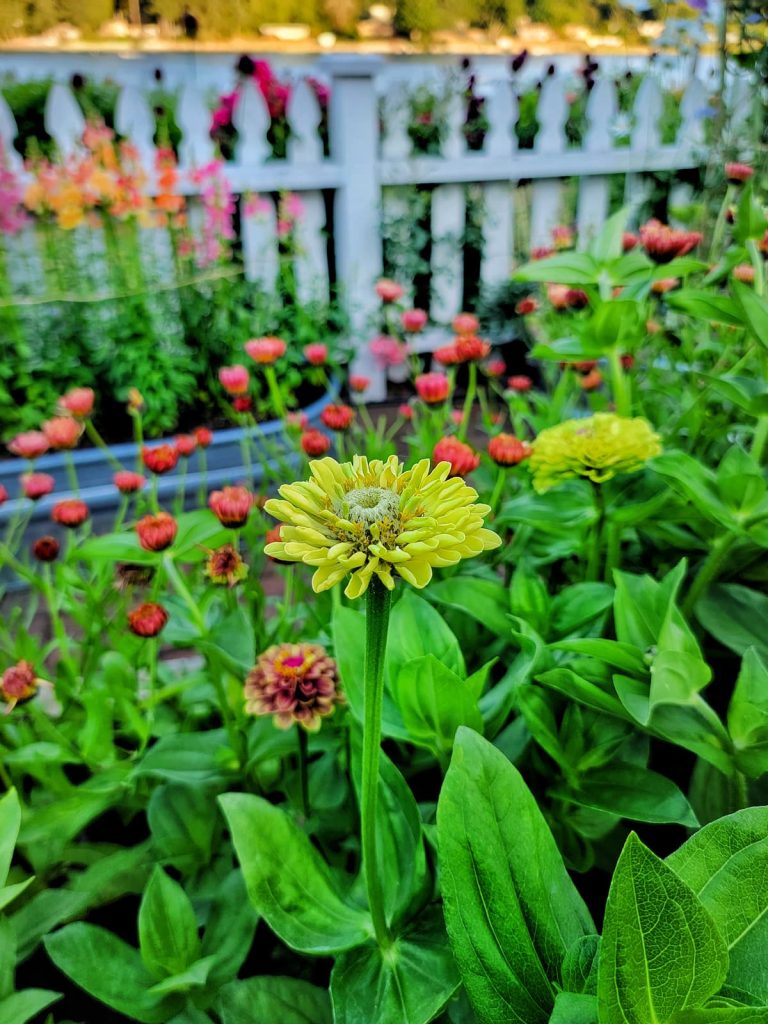
Zinnias attract a variety of pollinators, such as butterflies and hummingbirds. My favorite thing is to visit the cut flower garden in the early evening and watch the bumble bees sleeping in the zinnia flower heads.
These annual flowers have a relatively quick growth cycle and can bloom from early summer until the first frost, providing long-lasting vibrancy. Their heat and drought tolerance make them ideal for gardeners in warmer climates.
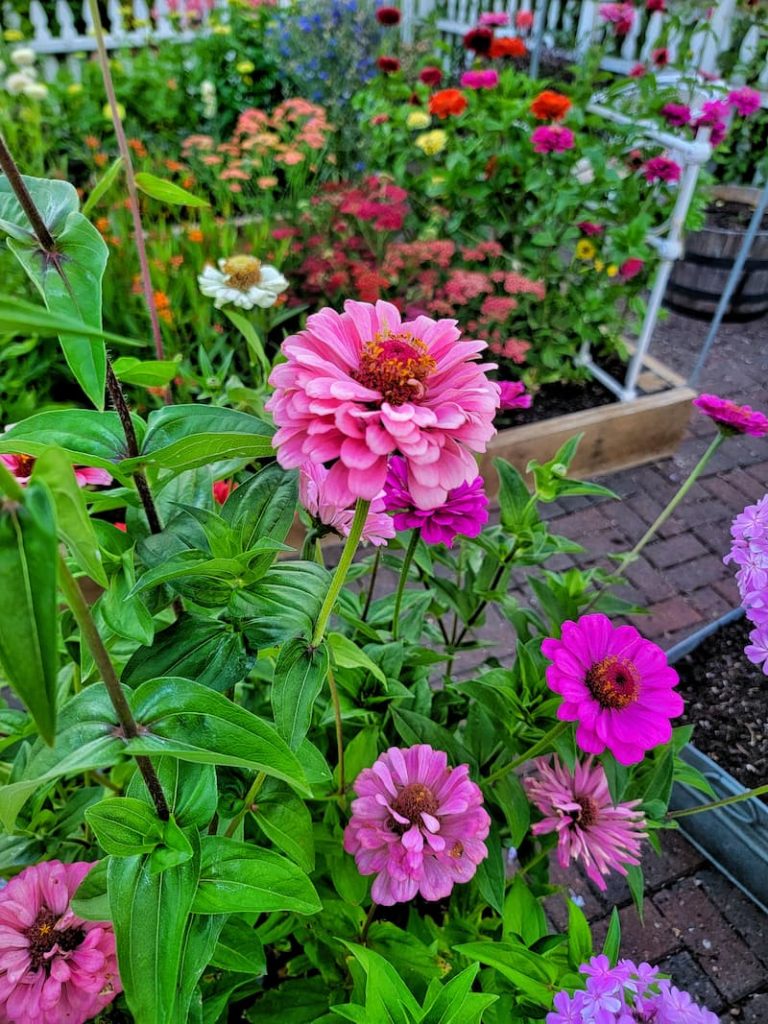
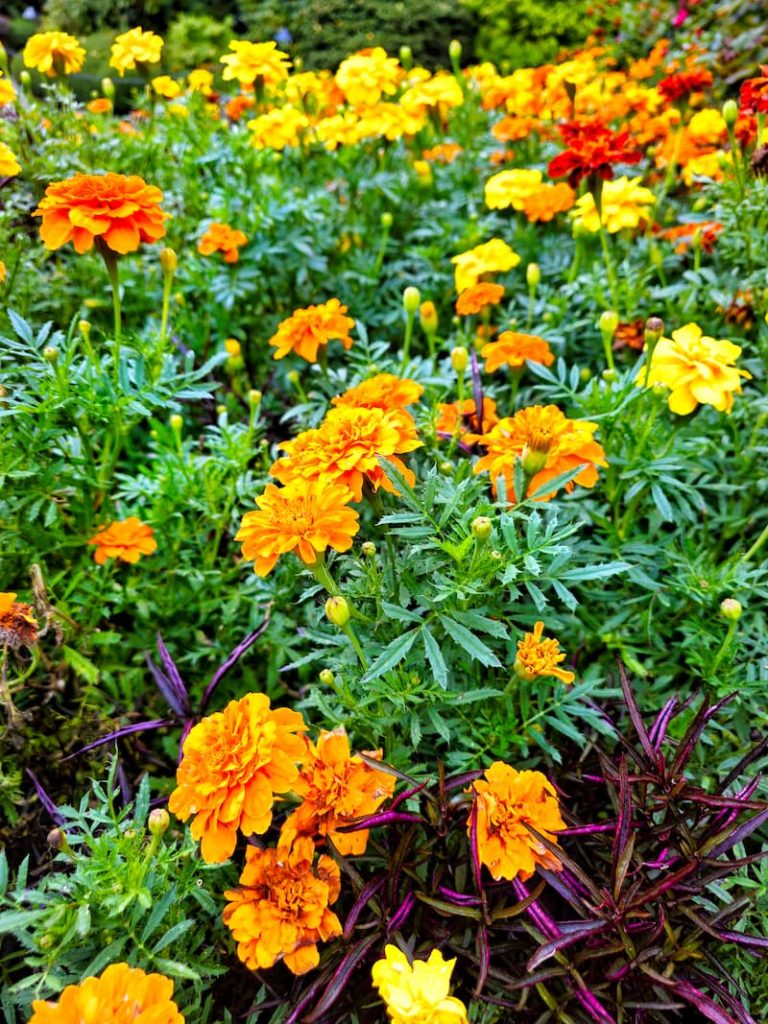
2. Marigolds
Marigolds (tagetes) are one of the easiest annual flowers. They are resilient and can naturally repel pests like aphids and mosquitos.
While no plant is deer-proof, marigolds have a strong scent that acts as a deterrent to deer. This makes them the perfect companions in vegetable gardens.
These bright flowers also attract beneficial pollinators such as bees and butterflies.
Marigolds thrive in various soil conditions with minimal care, making them an excellent choice for gardeners at any experience level.
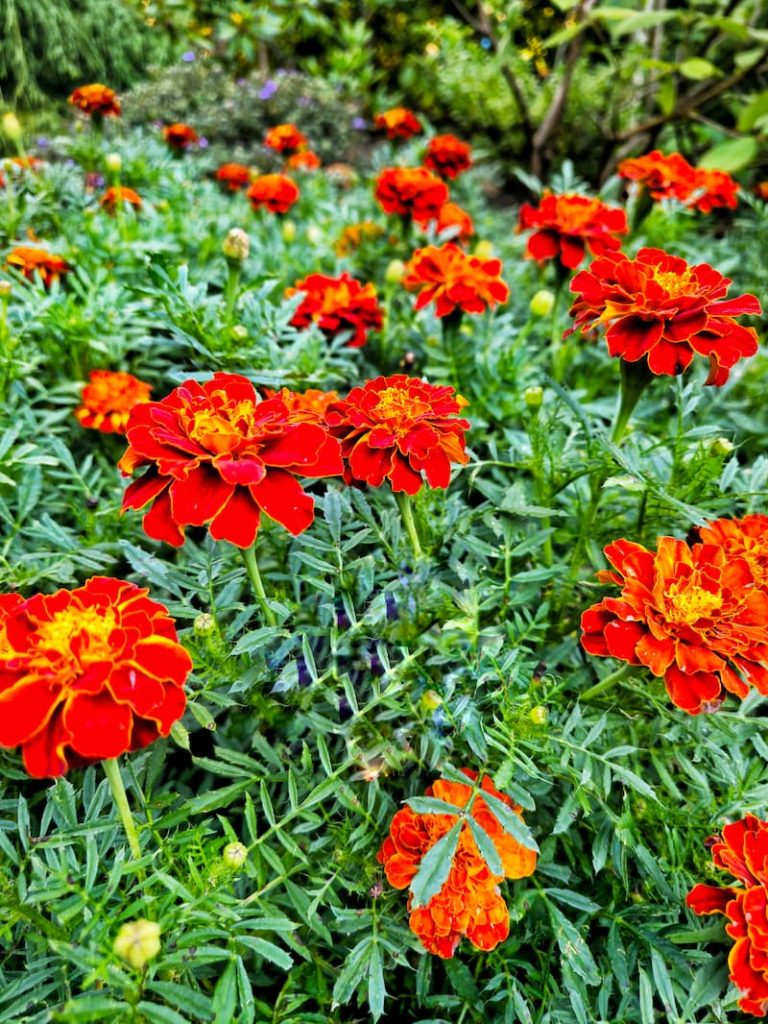
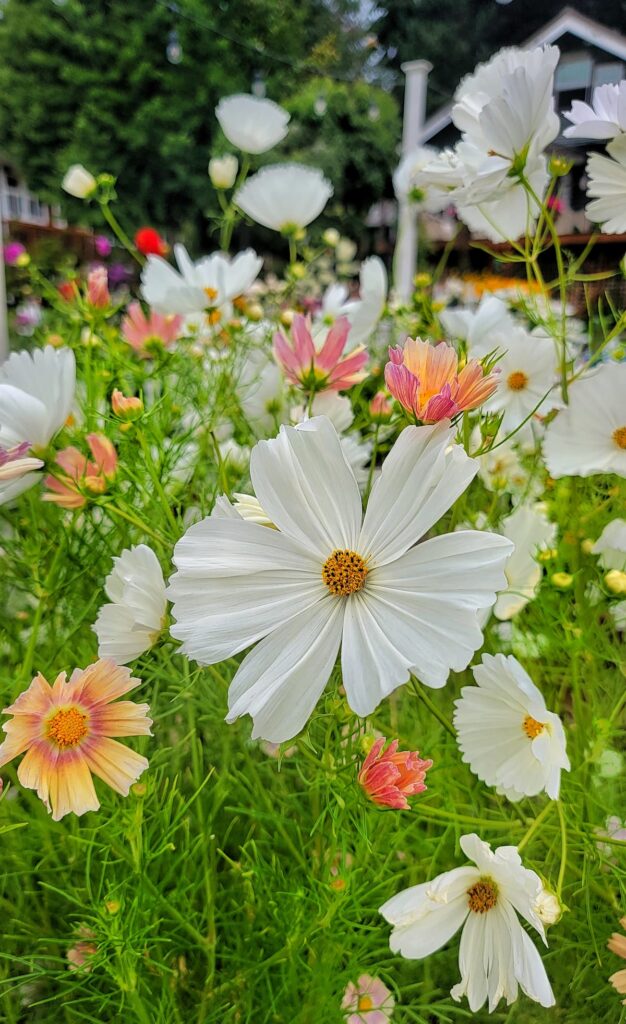
3. Cosmos
Cosmos (cosmos bipinnatus) are beautiful cut flowers with delicate, daisy-like petals and fern-like foliage that add a whimsical touch to summer bouquets.
Their seeds quickly germinate and grow, transforming their sprouts into blooming plants within a few weeks. They can adapt to various soil conditions, often thriving where other flowers struggle.
Cosmos are drought-tolerant and generally resistant to pests and diseases. With proper care, they will produce abundant flowers from early summer until the first frost.
Beneficial pollinators such as bees and butterflies are attracted to cosmos.
How to Grow Cosmos For Your Cut Flower Garden From Seed Indoors
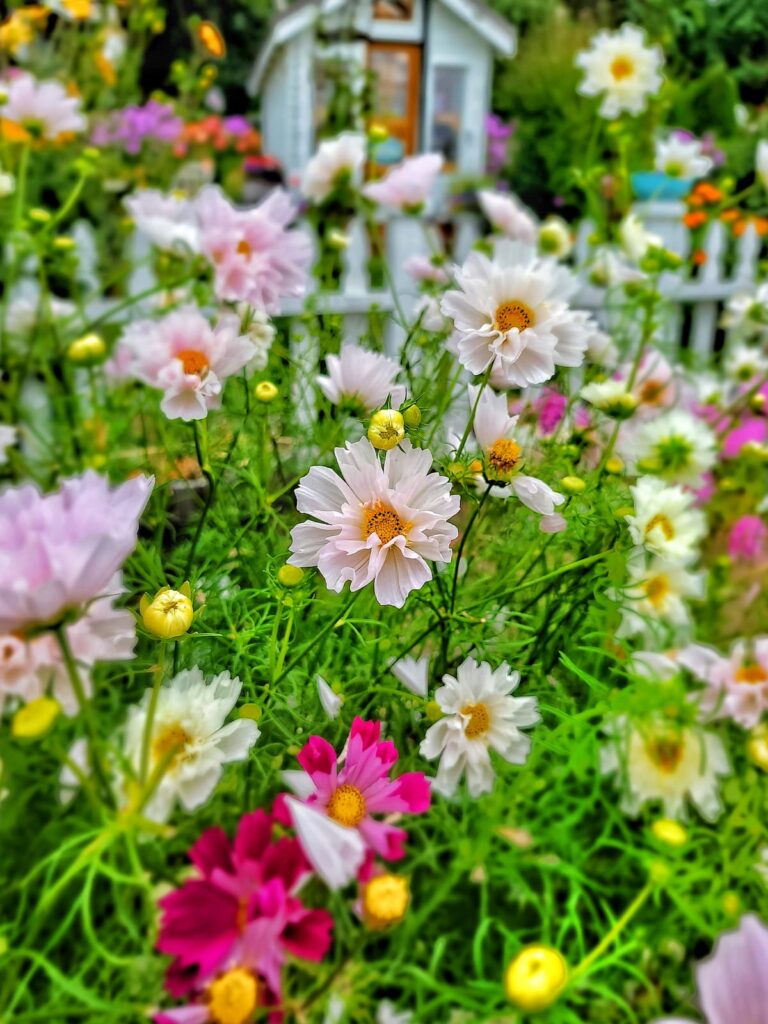
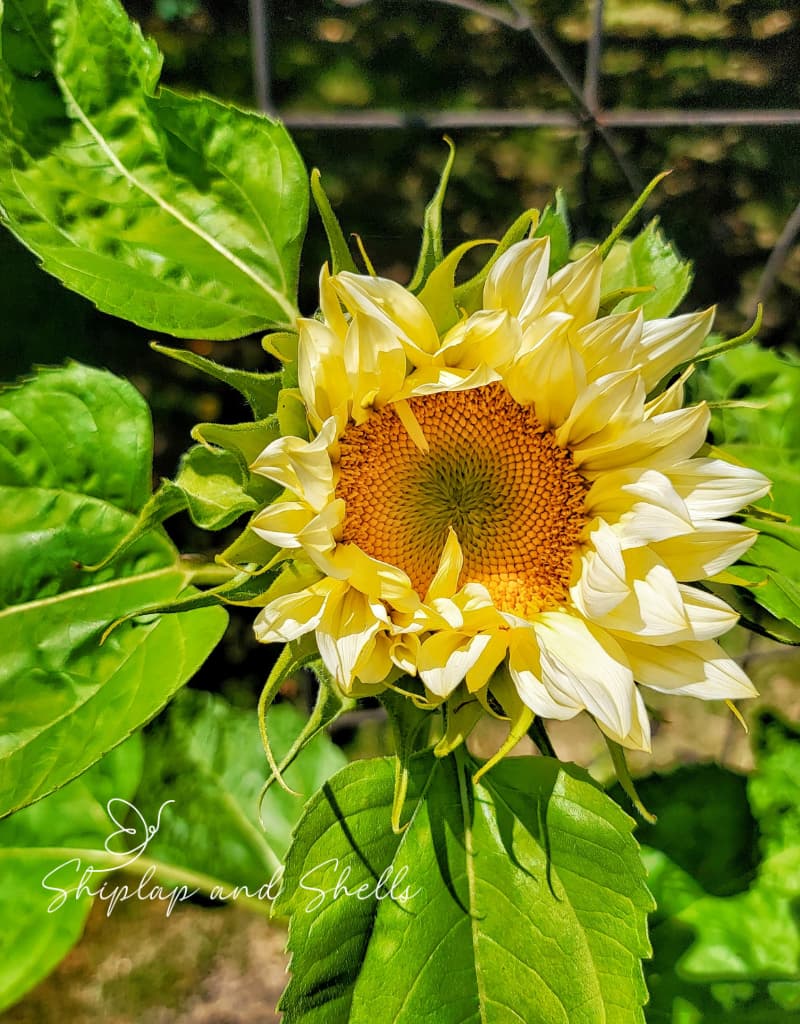
4. Sunflowers
Bright and cheerful sunflowers, a symbol of summer, attract pollinators like bees and birds. Their nectar-rich flowers provide a valuable food source.
Mature sunflower seeds are a treat for birds and can be harvested for human consumption.
Sunflowers (helianthus) are known for absorbing toxins from the soil. Their low-maintenance needs are just what a beginner gardener needs when first starting out.
Be sure to support your tall varieties of sunflowers to keep them from falling over and breaking off in the garden.
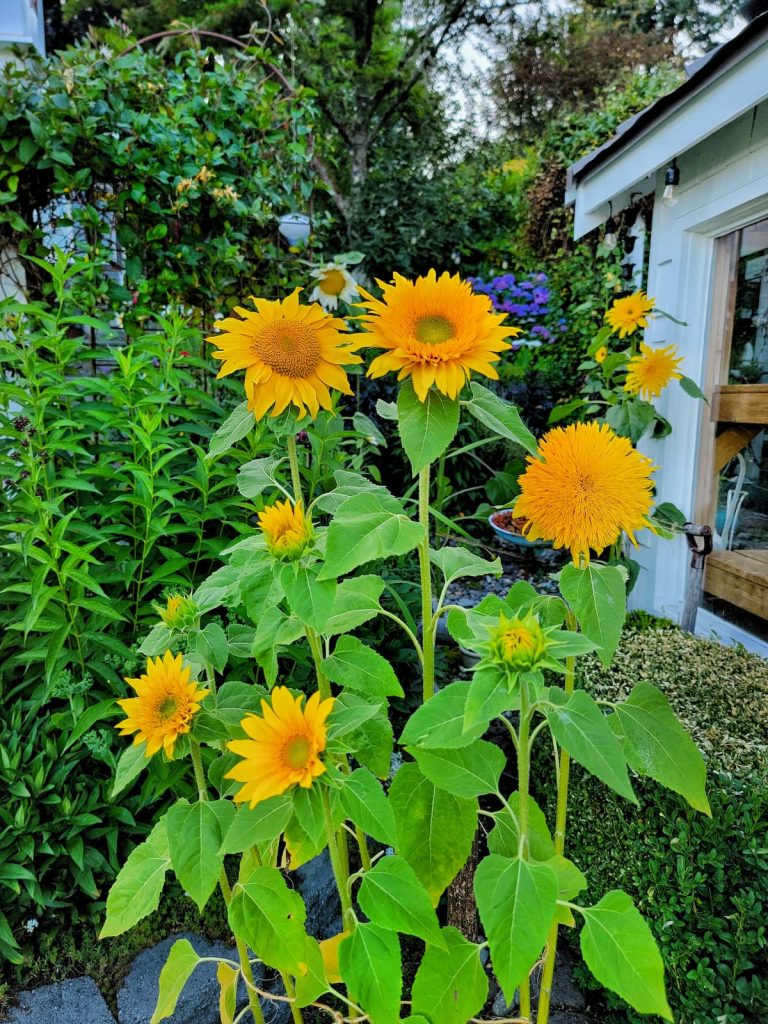
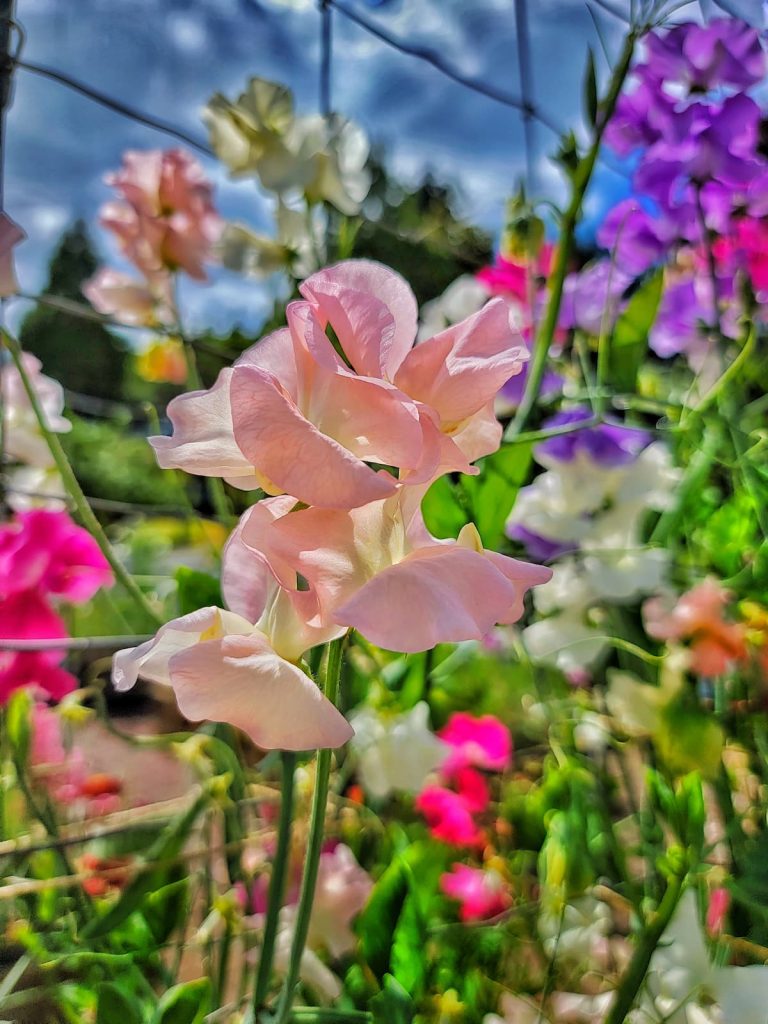
5. Sweet Peas
The sweet fragrance of these delicate flowers is why these cut flowers are so popular. They’re one of my favorite flowers in the cutting garden.
Old-fashioned sweet pea flowers bloom early and are among the first blooms in the late spring and early summer garden. They’re perfect for vertical gardens and gracefully climbing trellises, fences, and arbors.
Beneficial insects are attracted by sweet peas, contributing to the biodiversity and health of your garden.
One reason sweet peas (lathyrus odoratus) are one of the easiest flowers to grow from seed indoors is their large seeds. They’re easy to work with and only take a few days to germinate.
These are the first seeds I sow for the season.
From Seed to Bloom: Your Guide for Growing Healthy Sweet Peas
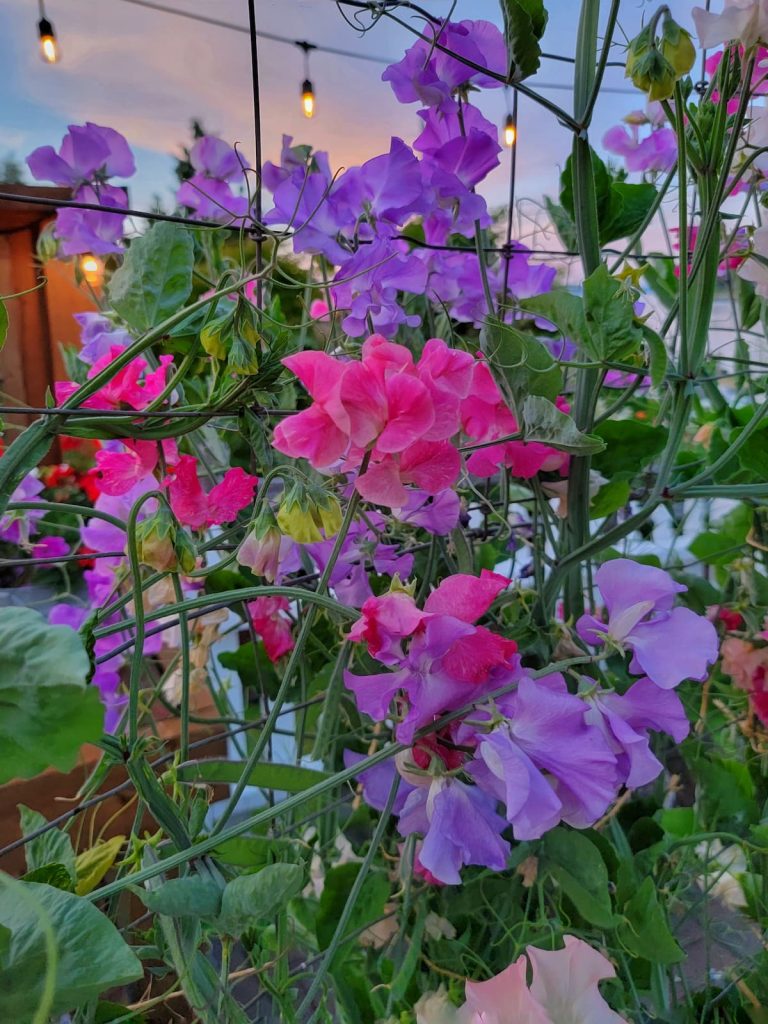
Seed Starting Supplies
Check out my favorite supplies and tools for starting seeds indoors. Whether you’re looking for grow lights or a seed starting mix, you’ll find what I use in my own greenhouse.
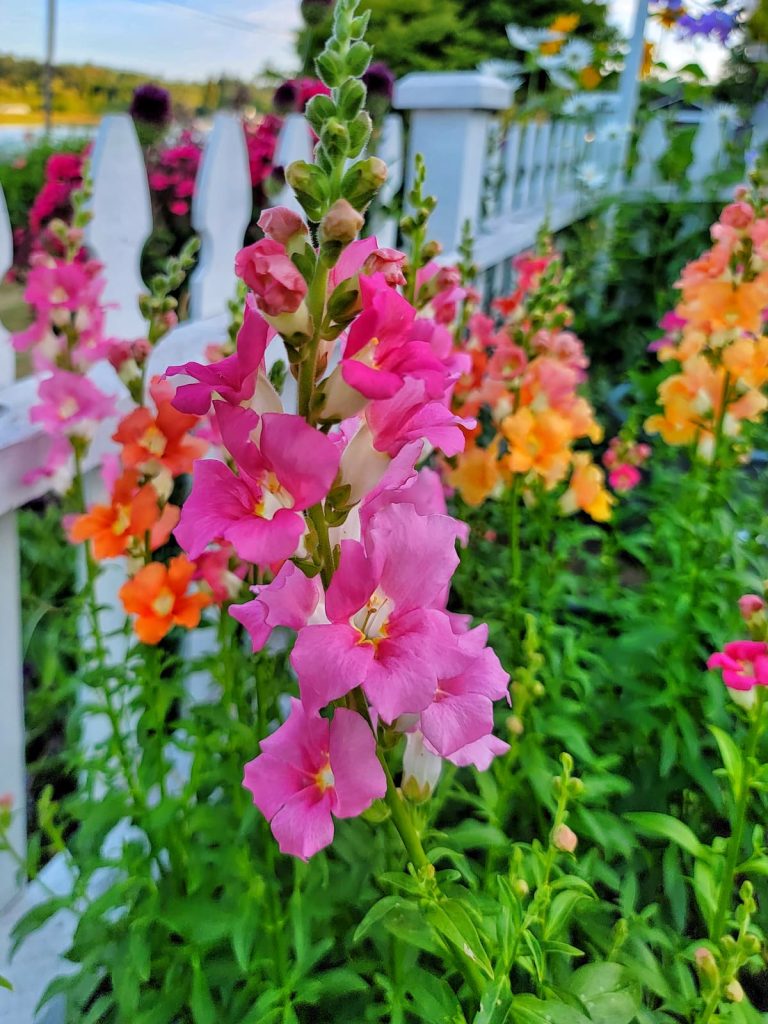
6. Snapdragons
These charming flowers are known for their distinctive, dragon-shaped flower heads.
Snapdragons (antirrhinum majus) are excellent cut flowers. They come in various colors, from soft pastels to vibrant hues, and bloom profusely in cooler weather, extending the flowering season in spring and fall gardens.
Butterflies and bees are attracted to snapdragons.
Snapdragons are relatively easy to grow and require minimal maintenance once established, so they’re an excellent flowering plant for experienced gardeners and those just starting a garden for the first time.
How to Sow Snapdragon Seeds Indoors
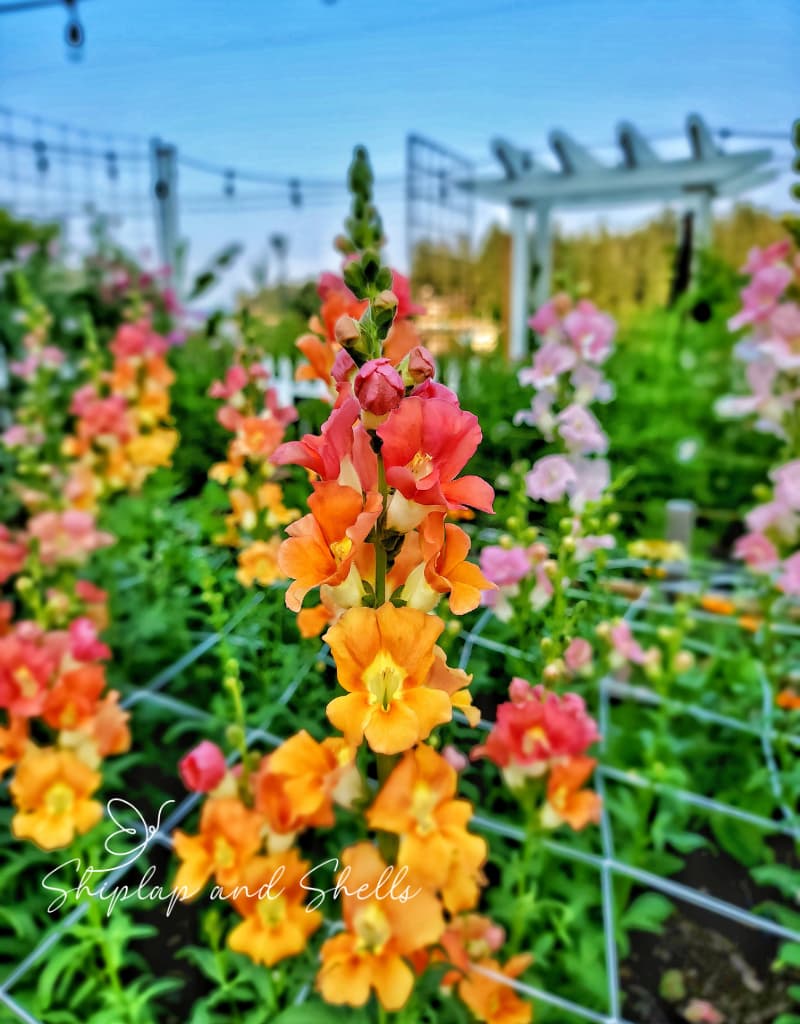
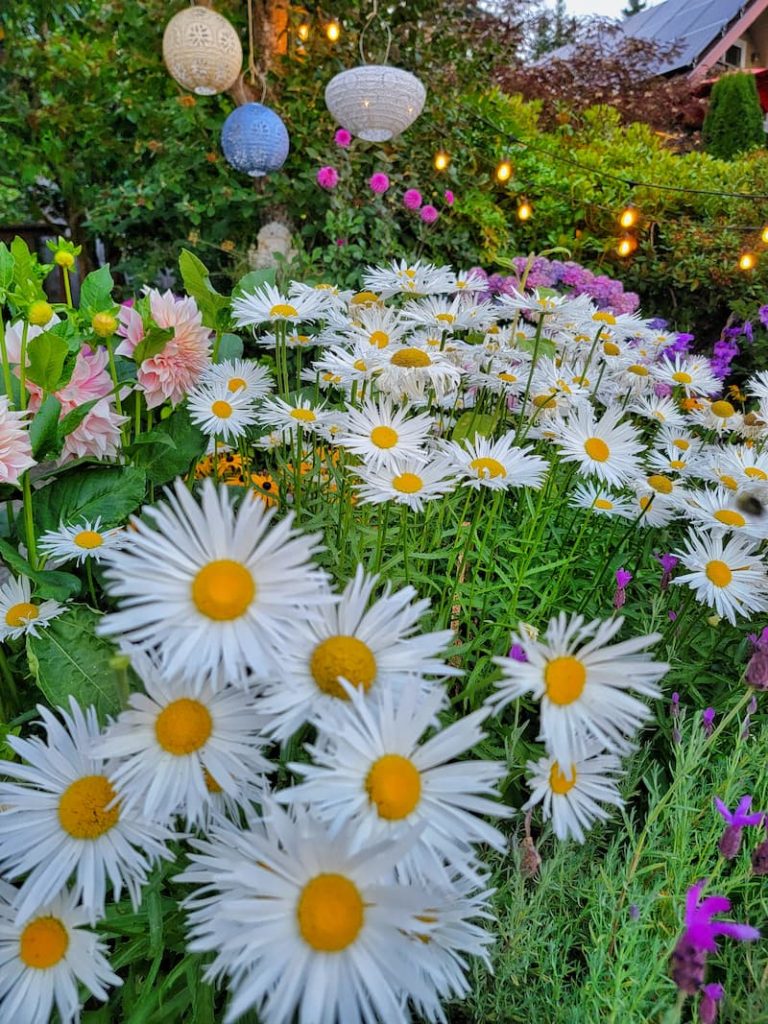
7. Shasta Daisies
With their bright white petals and sunny yellow centers, Shasta daisies (Leucanthemum × superbum) are known for minimal maintenance requirements. Deadheading these blooms will promote continuous blooming.
Daisies bloom from through the summer, providing a long season of beauty. When I share pictures of my Shasta daisies, I get the same comments every time that they are a “happy” flower.
These garden plants are great for attracting butterflies and other pollinators. But they’re also deer-resistant.
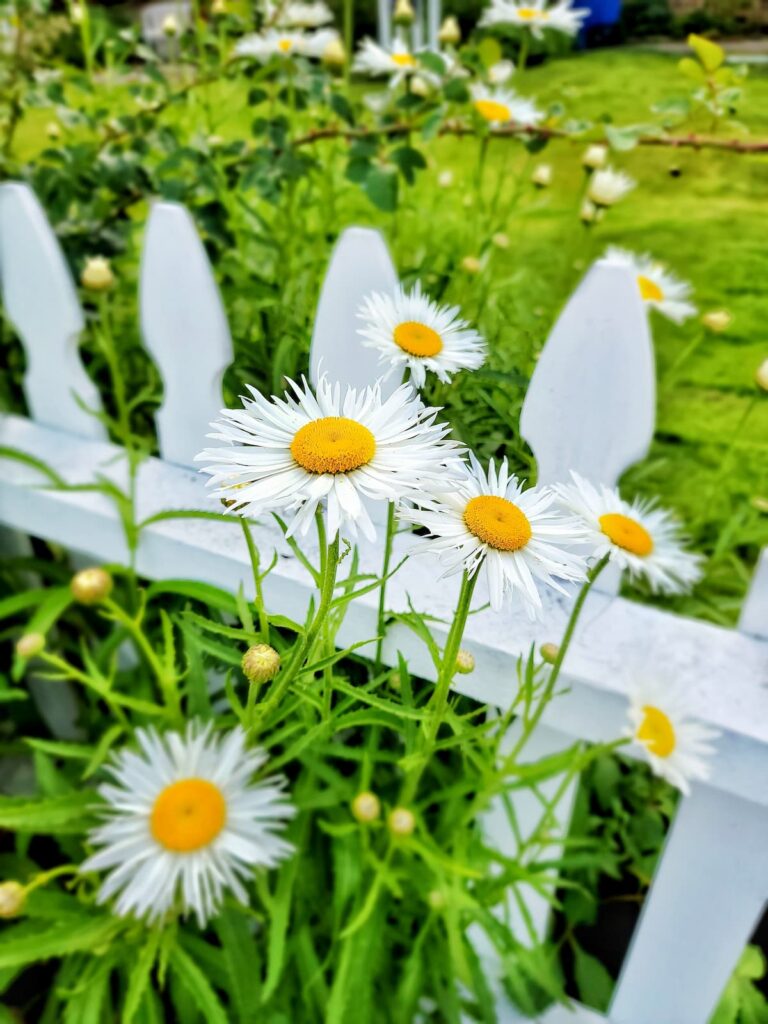
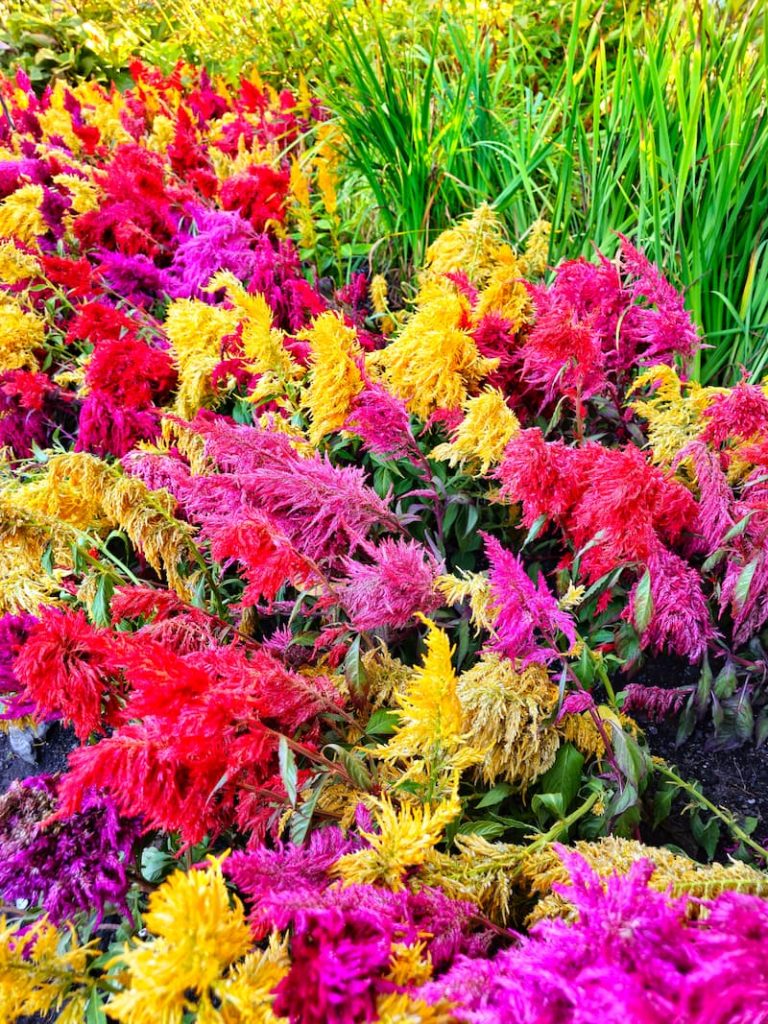
8. Celosia
This colorful and unique flowering plant has the most unique blooms that come in various shapes, including plumes, crests, and spikes.
Celosia (Celosia argentea) is a great choice for gardeners of all levels. They are drought tolerant once established, which is especially beneficial in hot and dry climates.
Pollinators like bees and butterflies are attracted to these beautiful flowers. Because they can withstand heat and bloom profusely throughout the summer and into fall, celosia is the perfect flower to grow to add long-lasting color and texture to your garden.
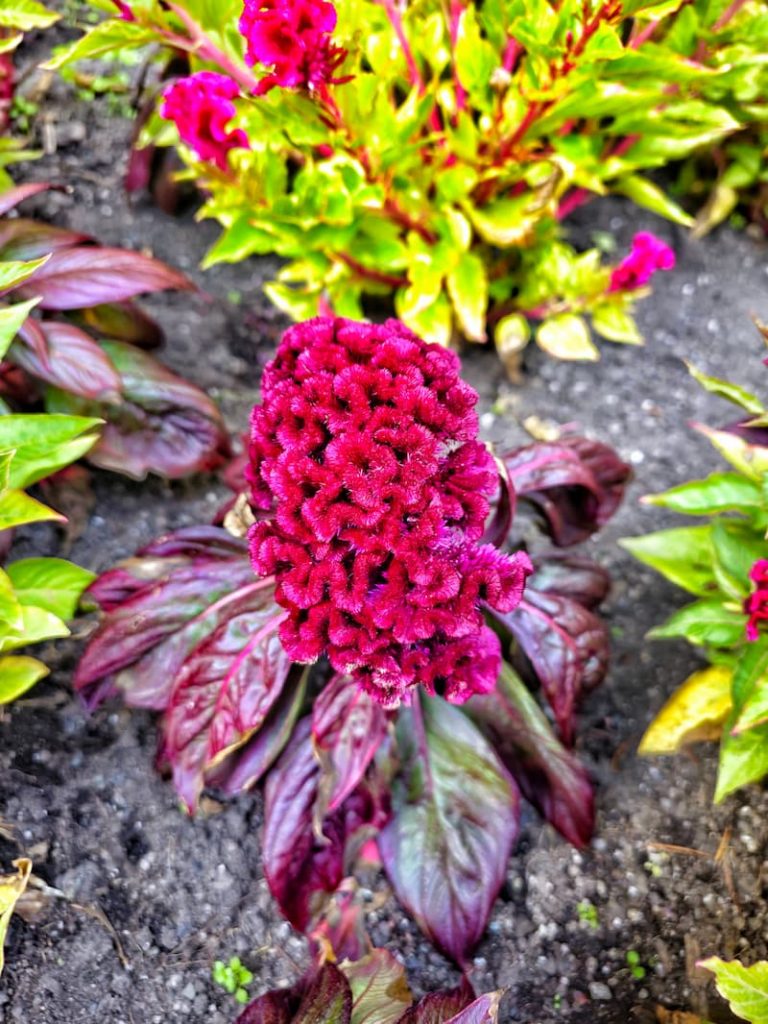
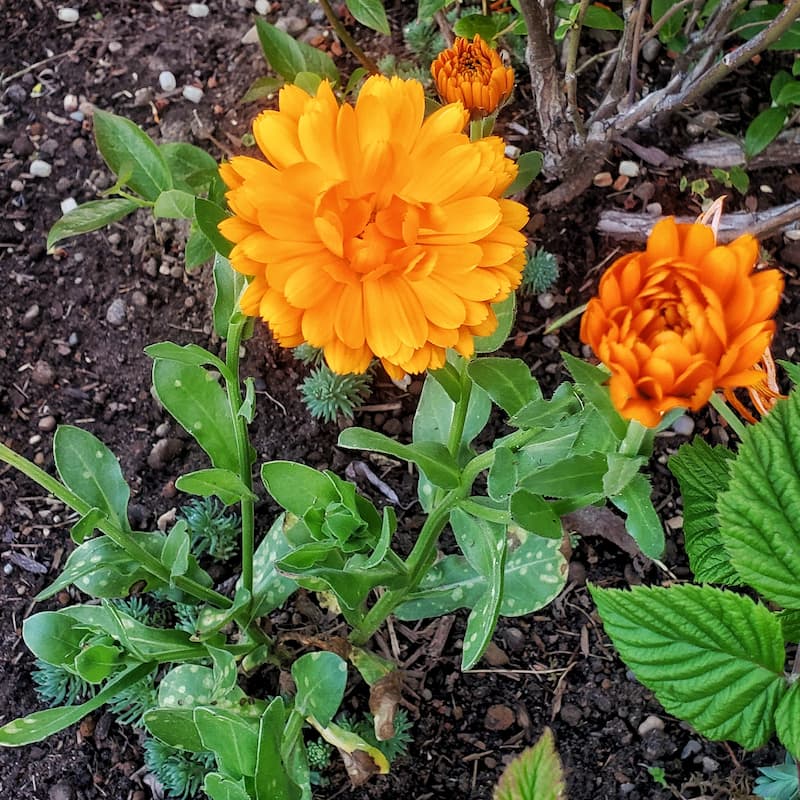
9. Calendula
Calendula flowers are known for their medicinal properties. They are used in creams, oils, and teas to soothe skin irritations and promote healing. They are also edible and can be added to salads and other dishes for a splash of color and a peppery taste.
Calendula (Calendula officinalis) is a cold-tolerant annual that blooms from early spring through fall. In mild winter climates, it may even flower during the winter months.
Calendula is perfect for vegetable gardens, borders, and companion planting because it attracts beneficial insects and is easy to care for.
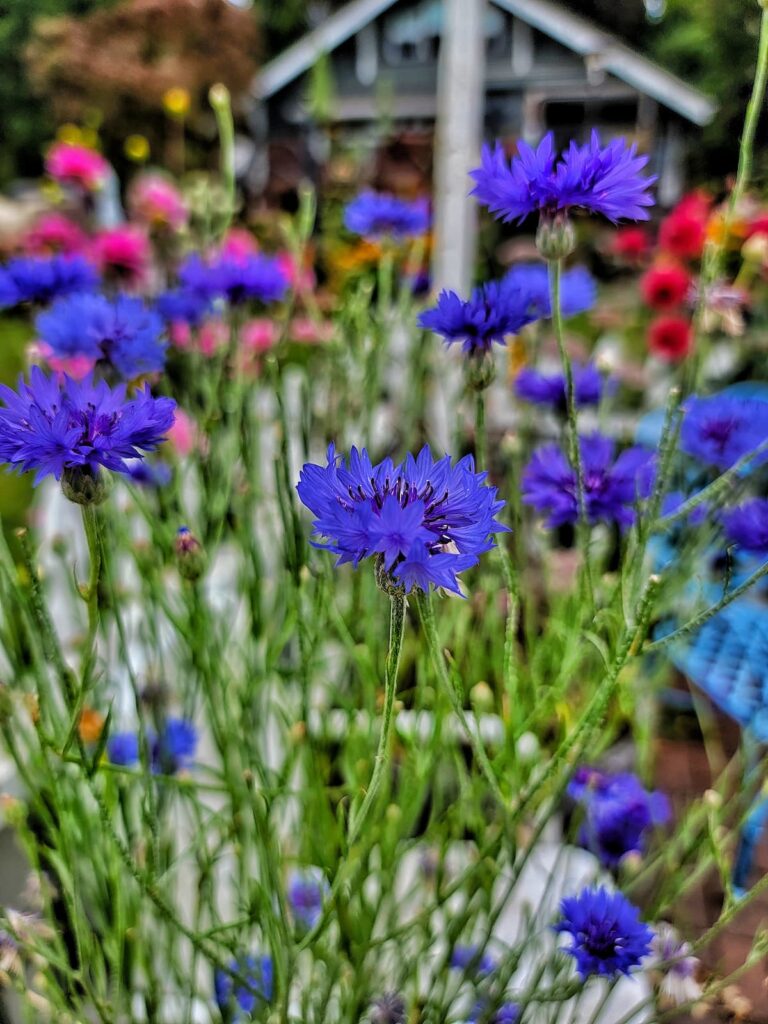
10. Bachelor’s Button
Bachelor’s Buttons (Centaurea cyanus), also known as Cornflower, are a charming addition to flower beds with vibrant and delicate blooms in shades of blue, pink, purple, and white.
These are very easy flowers to grow indoors from seed and are known for their ability to thrive in poor soil conditions. I was surprised to see my blue flowers self-seed the following year, growing through the cracks in my pavers and with no water source.
Once established, Bachelor’s Button plants are drought-tolerant and require minimal care and watering. Their nectar-rich flowers attract pollinators such as bees and butterflies.
Cornflowers make excellent cut flowers with a long vase life. They can also be used in dried flower arrangements, retaining their color and shape well after drying.

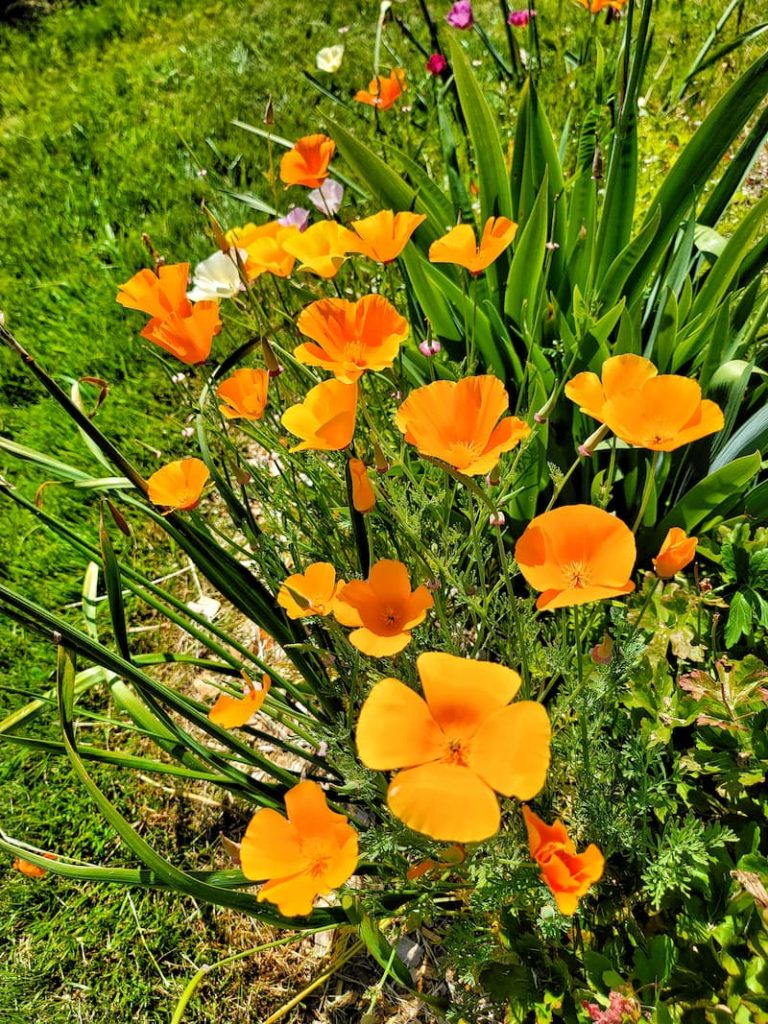
11. California Poppies
These drought-tolerant plants thrive in dry conditions. California poppies (Eschscholzia californica) are known for their ability to self-sow, ensuring a continual display of color year after year with minimal effort.
These poppies attract a variety of pollinators, including bees and butterflies. Their resilience to poor soil and drought conditions makes these flowers perfect for low-maintenance gardens.
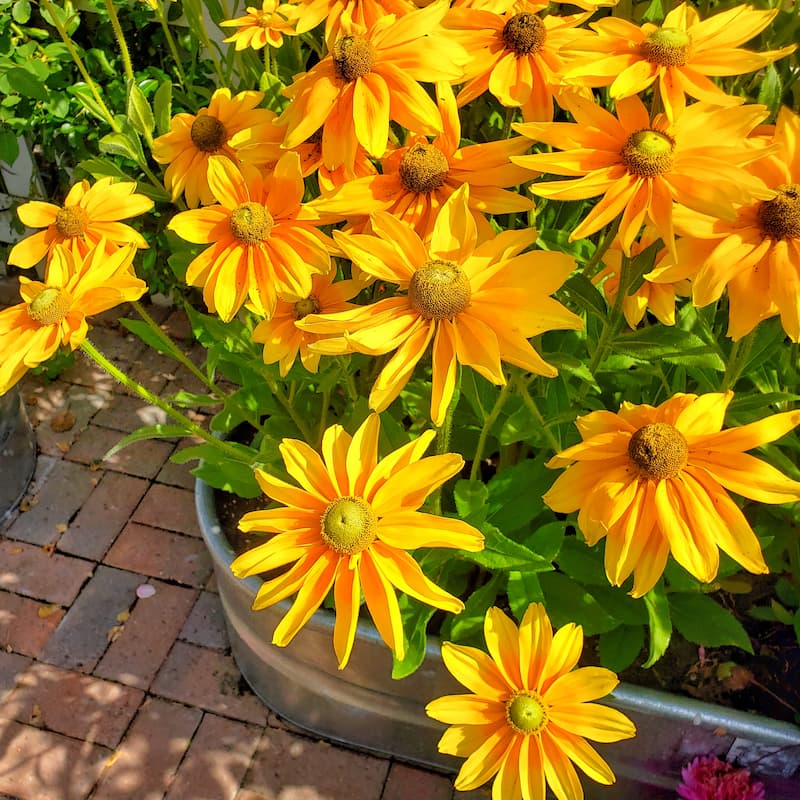
12. Black-Eyed Susans
Black-eyed Susans (Rudbeckia hirta) are an amazing perennial that brings a touch of wildflower charm to any garden.
Known for their golden-yellow petals and dark brown centers, these flowers symbolize late summer and early fall, blooming from June to September.
Black-eyed Susans are incredibly resilient, thriving in various conditions and requiring minimal care once established. This hardiness makes them an excellent option for gardeners looking for low-maintenance plants.
They attract a variety of pollinators, including bees and butterflies, and their seeds provide a food source for birds in the winter, adding to the biodiversity of your outdoor space.
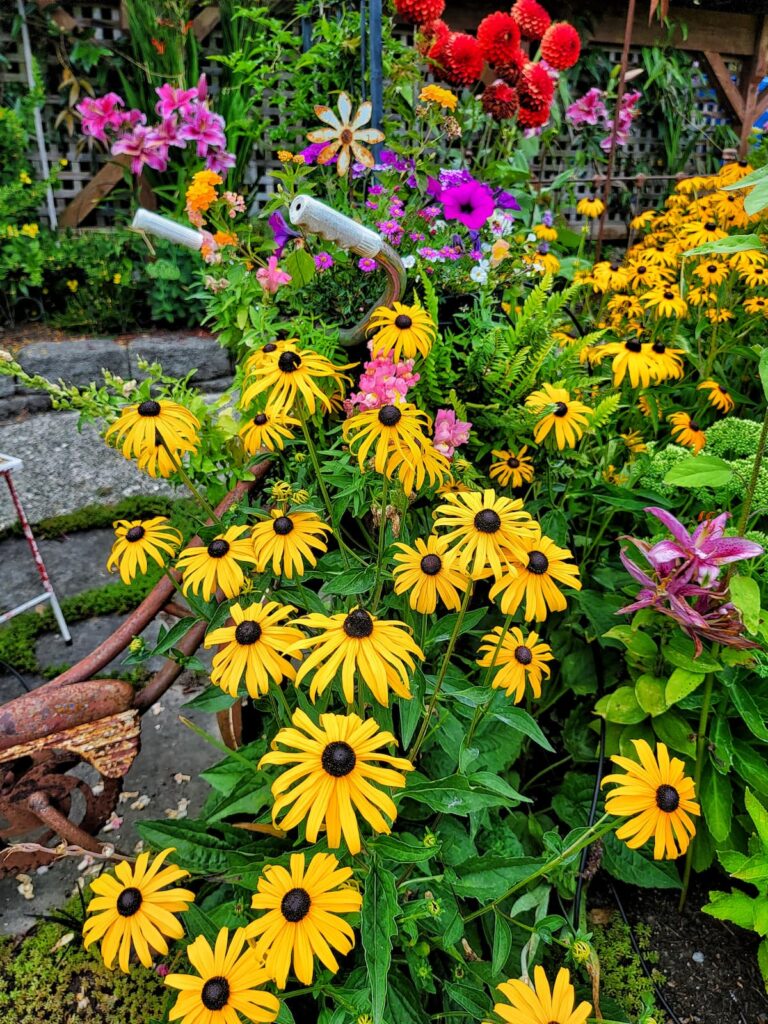
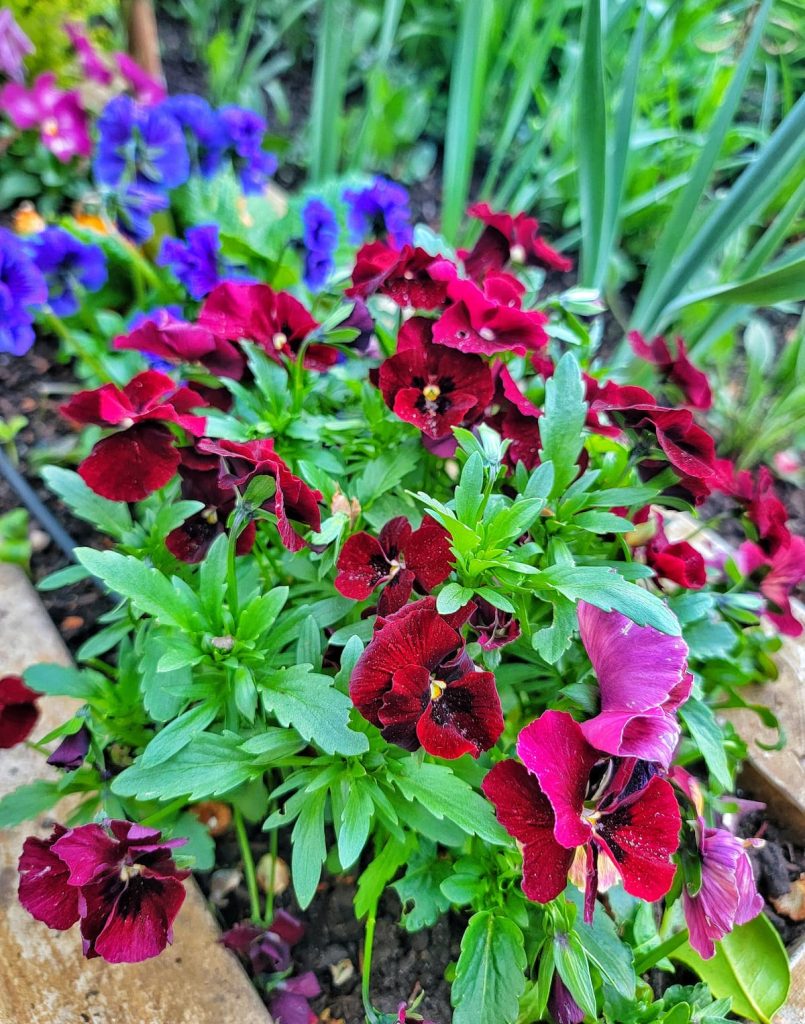
13. Pansies
These hardy flowers are a great choice for the cooler months of early spring and fall and, in some regions, throughout the winter, bringing cheer to the garden when most other plants are dormant.
Pansies (Viola × wittrockiana) have an excellent tolerance for cold weather, perfect for extending the blooming season. They’re also edible, with a mild, sweet-grassy flavor, making them a colorful addition to salads and desserts.
These flowering plants attract pollinators like butterflies. With their low maintenance needs and the ability to thrive in cooler temperatures, pansies are a fantastic option for gardeners looking to add long-lasting color and interest to their outdoor spaces.
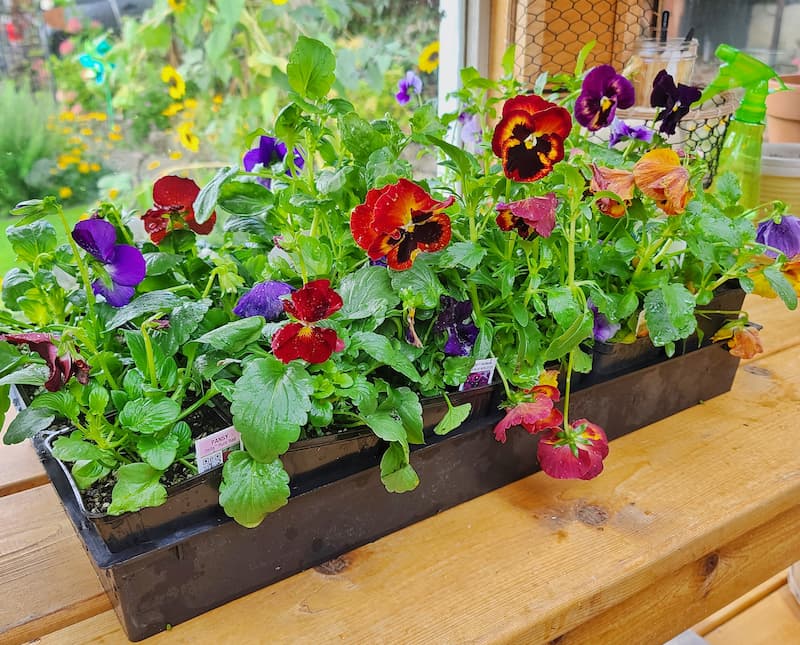
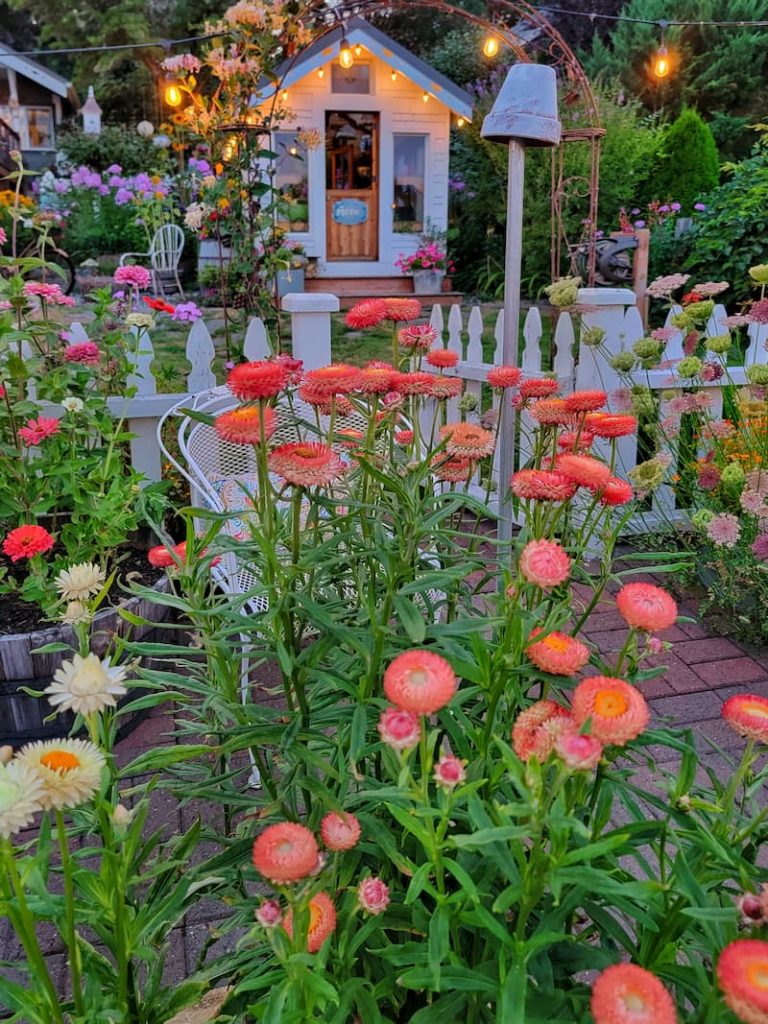
14. Strawflowers
What I love most about these easy flowers is their paper-like consistency. This makes them beautiful while in bloom and perfect for dried floral arrangements. They also retain their color and shape long after being picked.
Strawflowers (Xerochrysum bracteatum) are drought-tolerant plants ideal for gardeners looking for low-maintenance options with a high impact. They thrive in hot, dry conditions, perfect for sunny spots where other plants might struggle.
Their ability to withstand poor soil and drought conditions makes them resilient to challenging garden environments.
Strawflowers attract pollinators like bees and butterflies. Their long blooming season, from summer through fall, ensures your garden remains vibrant for months.
How to Grow Strawflowers For Your Cut Flower Garden From Seed Indoors
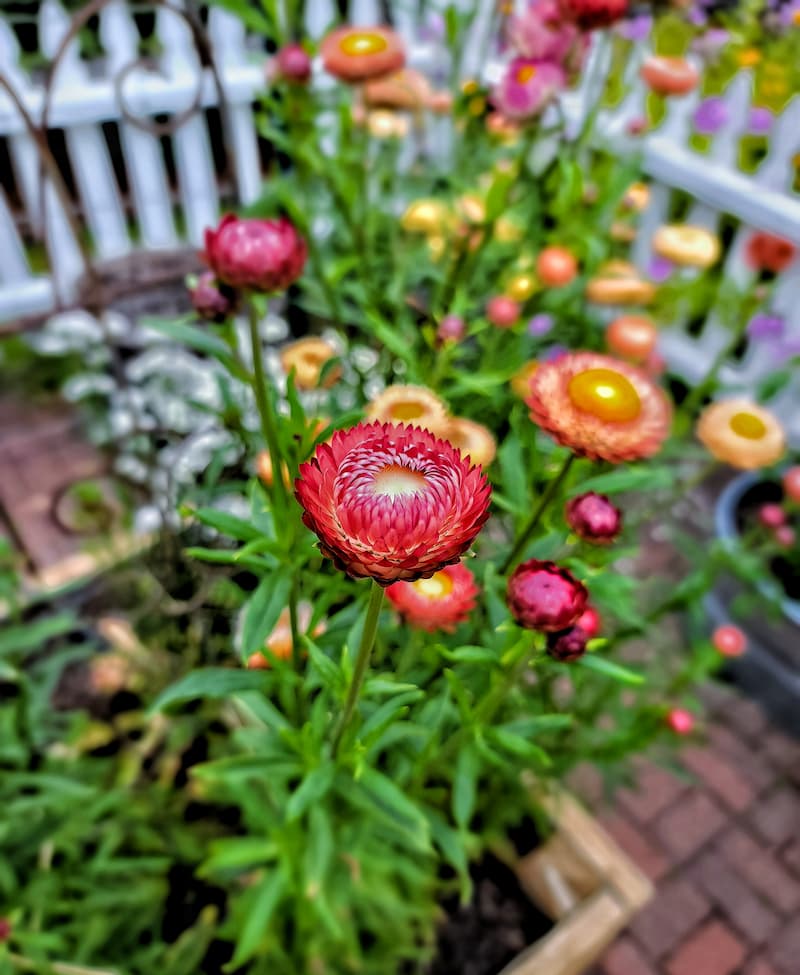
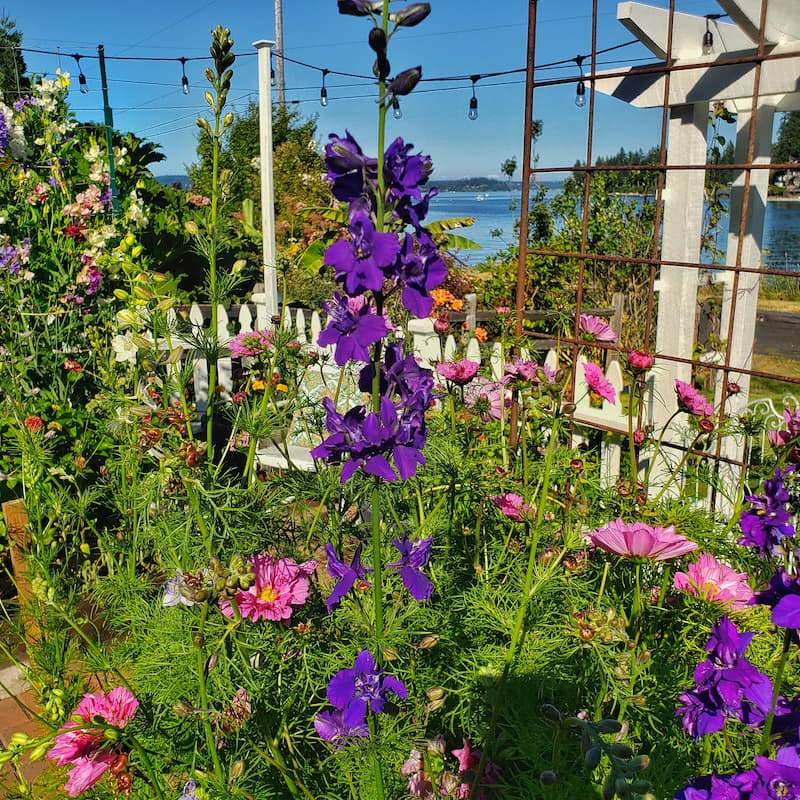
15. Larkspur
Larkspur (genus Delphinium) is a stunning addition to any garden, with its towering spikes of delicate flowers and offering height and color.
These annuals, part of the Delphinium family, bloom in early to mid-summer with shades of blue, purple, pink, and white.
Larkspur is particularly valued for its ability to add vertical interest to garden beds and borders, creating a visually striking backdrop for other plants.
Larkspur’s flowers attract a variety of pollinators, including bees and butterflies. With its sturdy stems and vibrant blooms, it is also an excellent choice for cut flower gardens.
They are easy to grow from seed and tend to self-sow, making it a low-maintenance option for gardeners.
Larkspur has toxic properties that require careful handling.
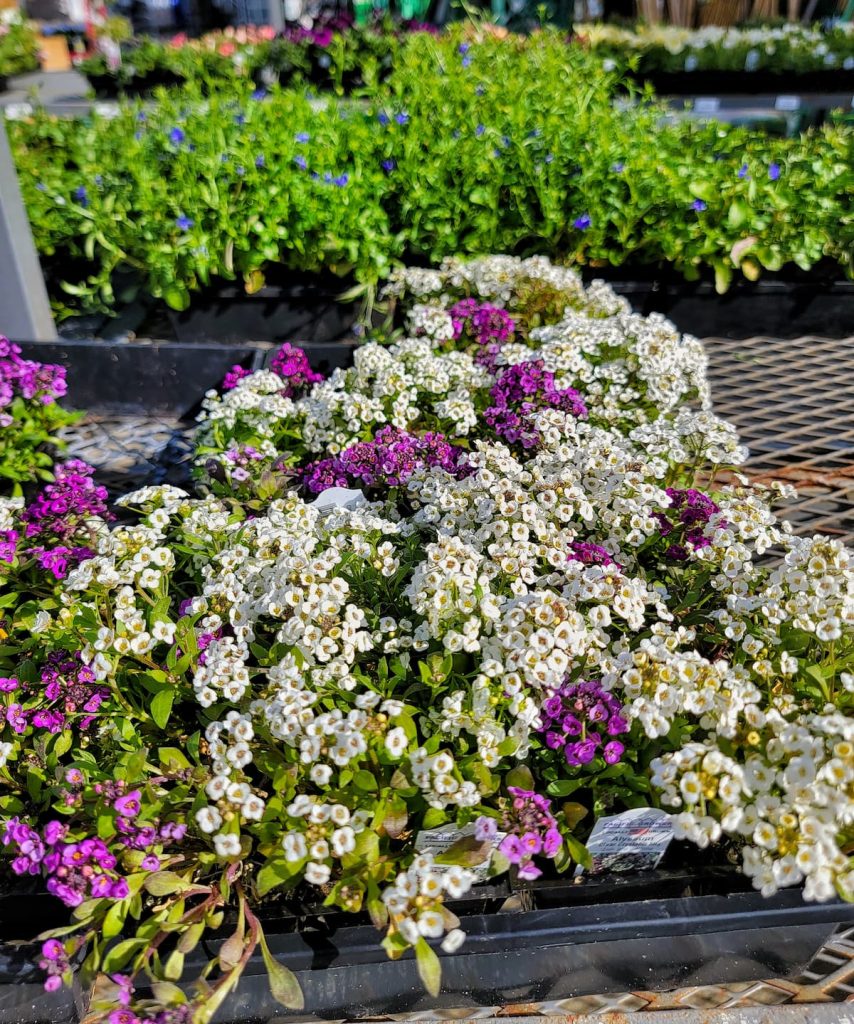
16. Sweet Alyssum
Sweet Alyssum (Lobularia maritime) has delicate honey-scented flowers that form a low, dense carpet of color from spring through fall. It is also drought-tolerant.
This easy-to-grow annual (perennial in USDA zones 9-11) has tiny, clustered flowers in shades of white, pink, purple, and yellow.
Sweet Alyssum attracts beneficial insects, including bees and butterflies. Its rapid growth and self-seeding nature make it a low-maintenance choice for busy gardeners.
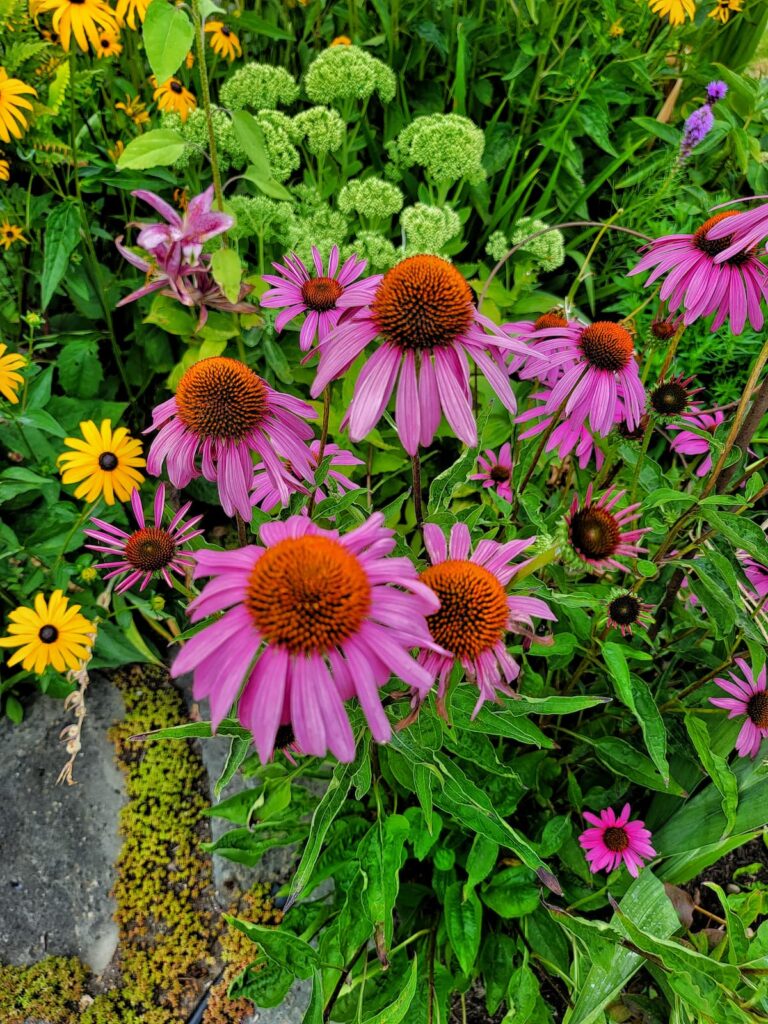
17. Coneflower
Coneflowers (Echinacea spp.) are native North American perennials with various vibrant blooms, including shades of purple, pink, red, yellow, and white, and sturdy stems with lance-shaped leaves.
These flowers attract pollinators such as bees, butterflies, and birds, especially goldfinches. Their long blooming period, from early summer through fall, provides color and life to the garden when many other plants begin to fade.
Echinacea plants are known for their resilience, thriving in hot, dry conditions and showing remarkable drought tolerance once established.
They’re also valued for their herbal properties, with Echinacea being used to boost the immune system.
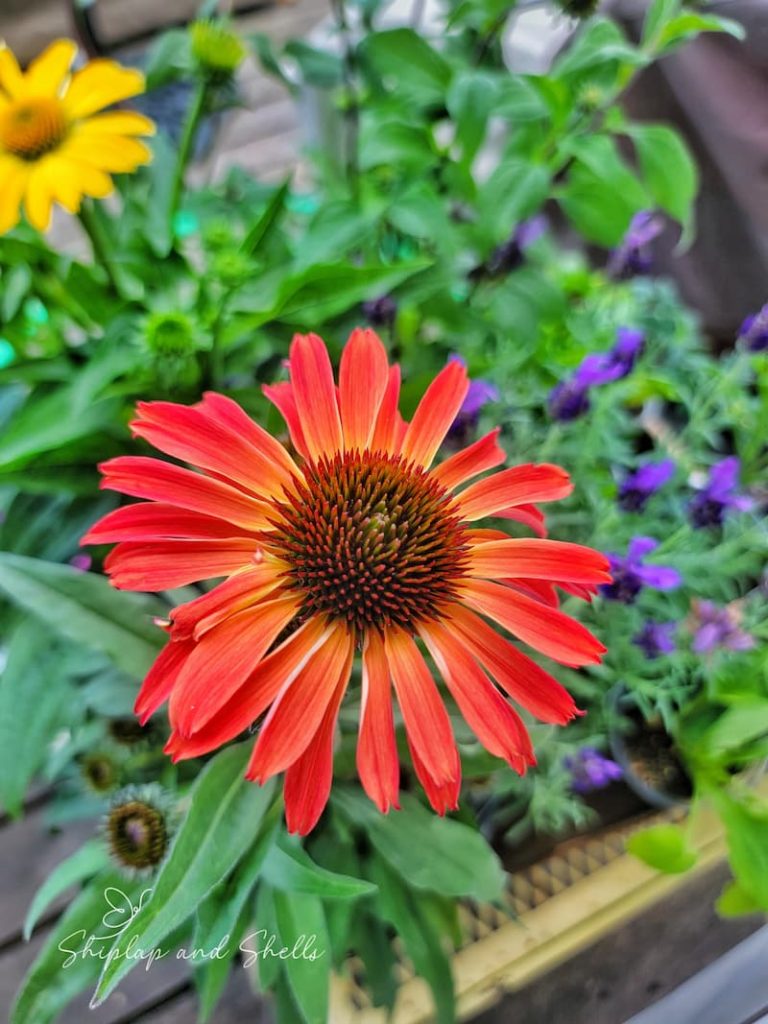
‘Growing a Cut Flower Garden’ Series
Learn about the ins and outs of growing a cut flower garden this year. Click the button below to be taken to the entire series of blog posts and choose what is interesting to you.
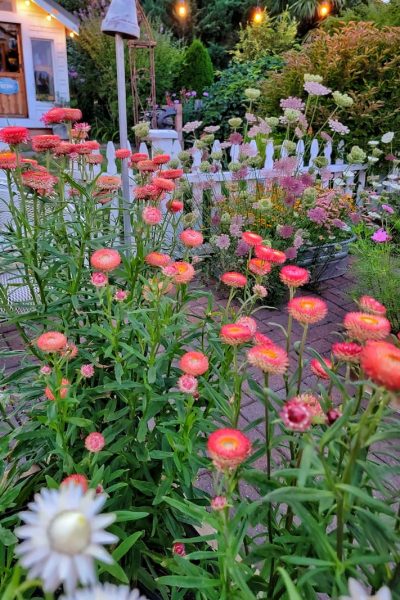
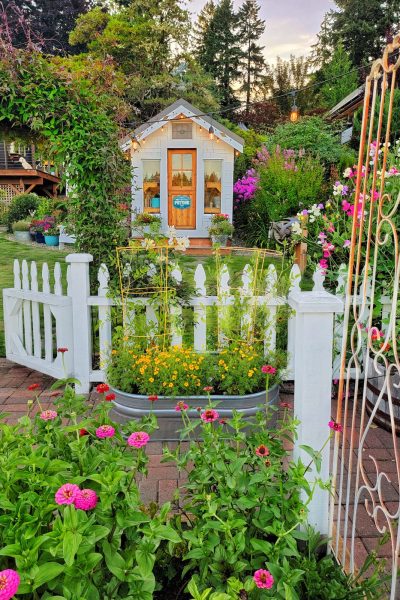
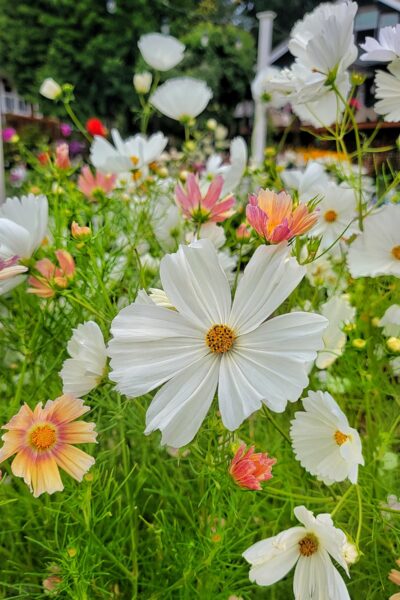
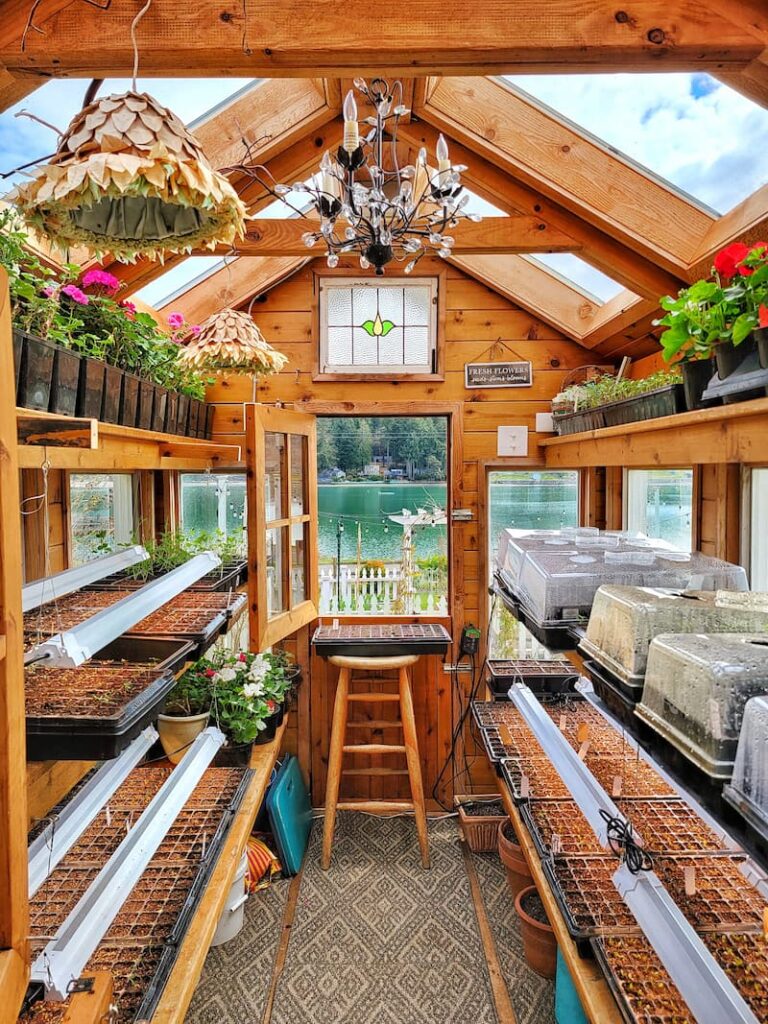
How to Grow Flowers from Seed Indoors
Growing flowers from seed allows gardeners to get a head start on the growing season. Here’s a guide on beginning this journey, from gathering supplies to transplanting your seedlings outdoors.
Supplies You’ll Need
For more information, read my blog post, ” Supplies for Successfully Sowing Cut Flower Seeds Indoors.”

Basic How-To
For more in-depth information about how to sow your flower seeds indoors, read my blog post “Growing Cut Flowers from Seed: Seed Starting 101“.
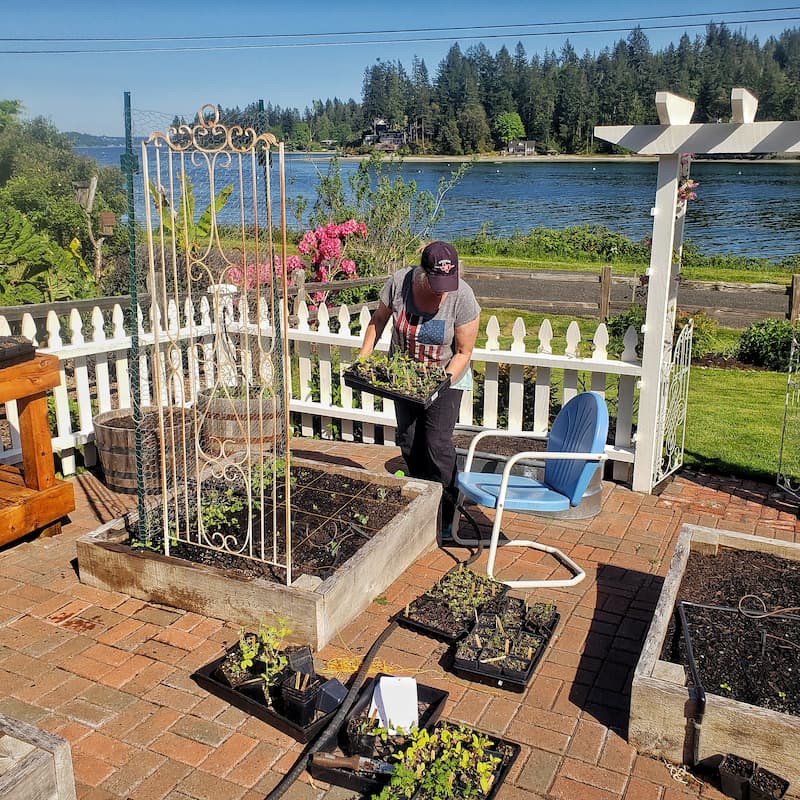
Transferring to Your Outdoor Garden
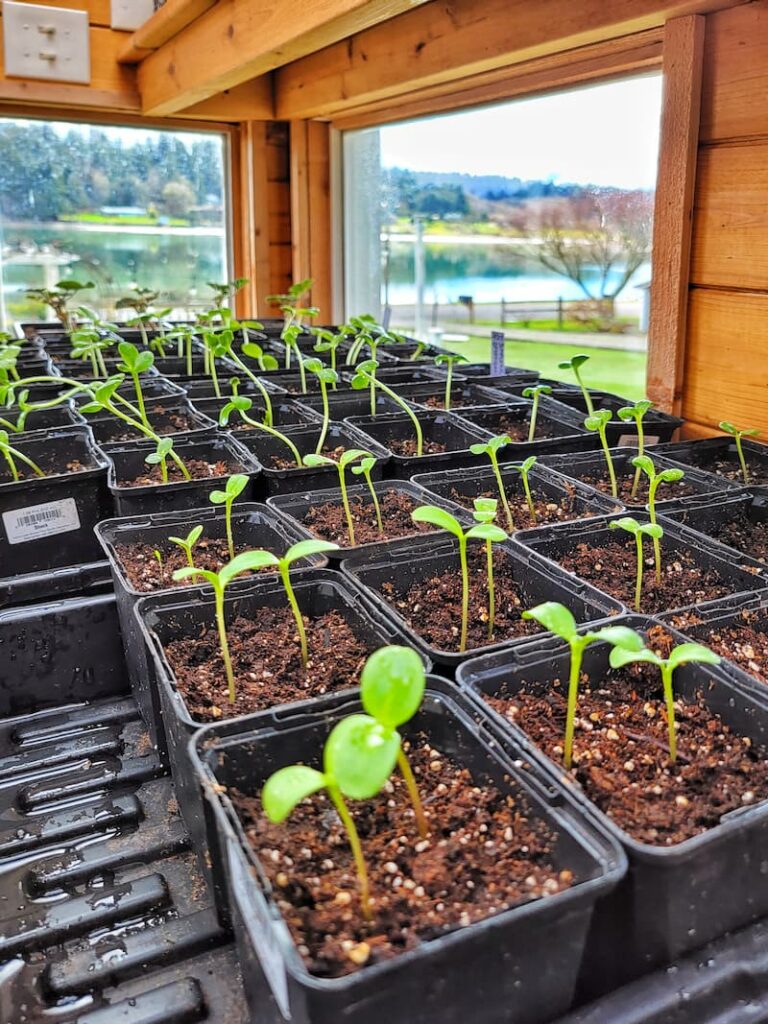
Is it Worth Growing Flowers from Seeds?
Growing flowers from seed offers numerous benefits and can be incredibly rewarding for gardeners of all skill levels. Here are several reasons why it’s worth considering.
Cost-Effective
Buying seeds is generally more economical than purchasing mature plants or seedlings from a nursery.
A single packet of annual flower seeds can grow dozens of plants for a fraction of the cost of buying the same number of grown plants.

Variety and Selection
When you grow from seeds, you can choose from a much wider variety of flowers than you might find at your local garden center.
This includes heirloom varieties and new hybrids. You can select plants based on color, height, bloom time, and other characteristics to create a customized garden that meets your preferences.
Healthier Plants
Growing your own flowers from seeds allows you to control the environment and conditions in which they grow. This can lead to healthier, more strong plants.
Seedlings raised in an environment where they will continue to grow can be more resilient and better adapted to the conditions in your garden.
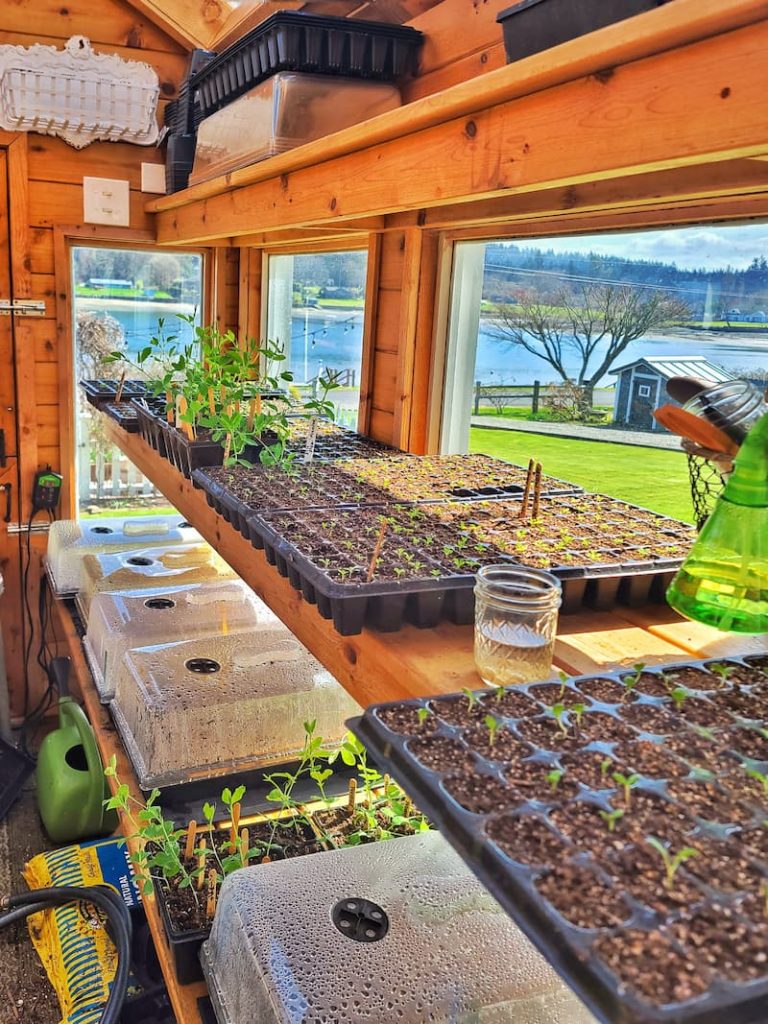
Personal Satisfaction
There is a true sense of accomplishment and satisfaction in watching seeds you’ve planted sprout and grow into beautiful flowers.
Extended Growing Season
Starting seeds indoors can extend your growing season, especially in cooler climates.
By sowing seeds indoors while it’s still cold outside, you can get a head start on spring and enjoy blooms earlier than if you waited to plant outdoors.
Environmental Benefits
Growing flowers from seeds can contribute to your garden’s biodiversity. Many flowers benefit pollinators, such as bees, butterflies, and birds.
By selecting a variety of plants that flower at different times, you can provide a continuous source of nectar and pollen throughout the growing season.
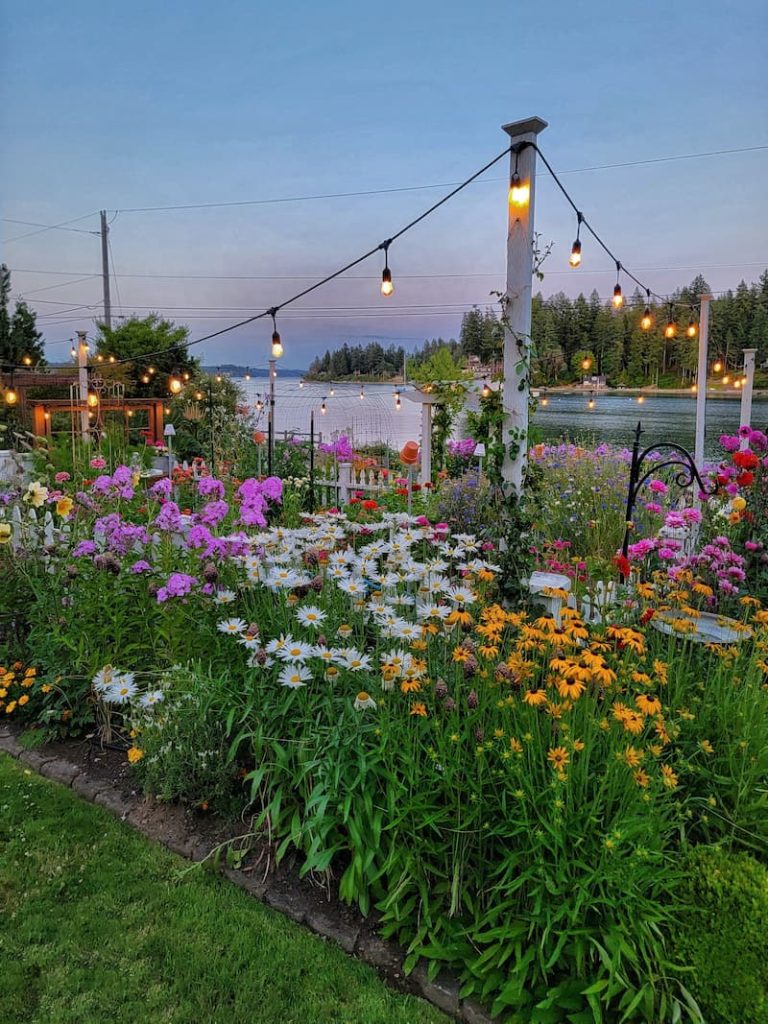
Common Questions About Growing Flowers from Seeds Indoors
What Flower Seeds Need to Be Started Indoors?
Starting flower seeds indoors before transplanting them outside can give gardeners a significant head start on the growing season, especially in regions with shorter growing periods.
This method is particularly beneficial for flowers that have a longer germination time, require controlled conditions for sprouting, or come from plants that need more time to mature and bloom.
Here are some types of flower seeds that are commonly started indoors.
Slow-Growing Perennials
These plants often take a long time to germinate and grow to a transplantable size. Starting them indoors allows for an earlier bloom, sometimes in their first year, which might not be possible otherwise.
Examples include lavender, echinacea (coneflower), and delphinium.
Tender Annuals
These flowers can’t tolerate frost and need a head start indoors for a more extended flowering period before the first frost of fall.
Examples include petunias, marigolds, impatiens, and begonias.
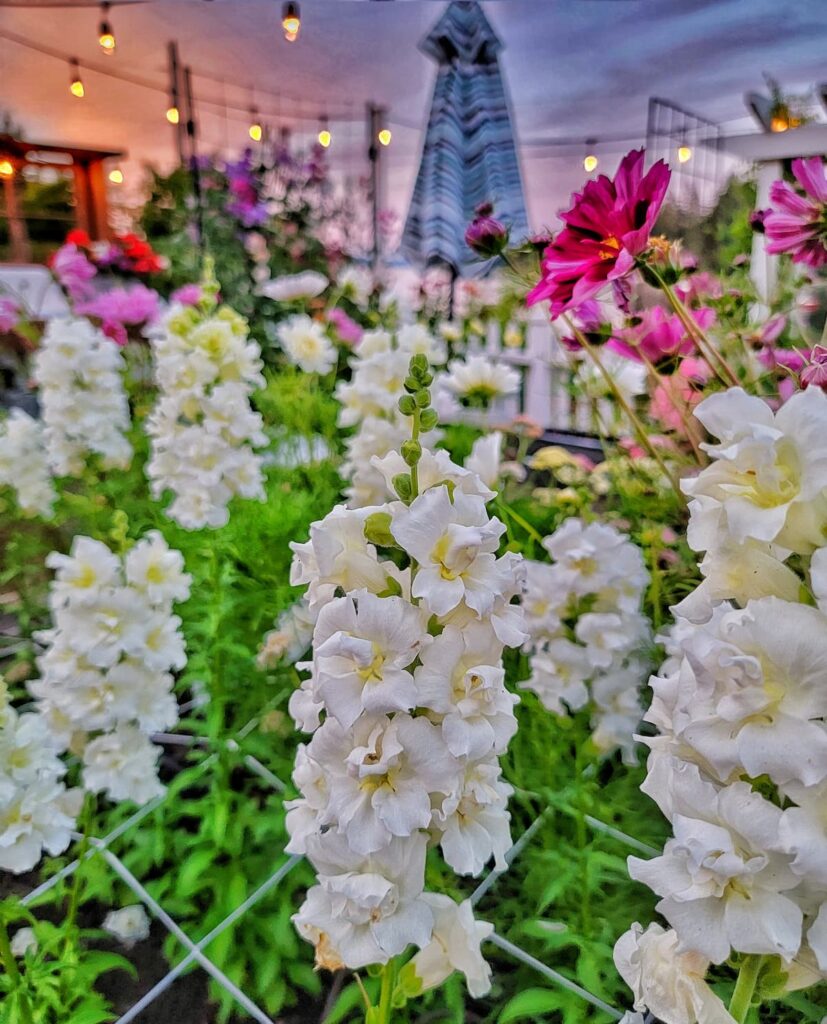
Plants with Long Growing Seasons
Some plants need a longer growing season than what their natural climate provides.
Starting seeds indoors ensures they reach maturity and have time to bloom. Examples include geraniums, snapdragons, and lobelia.
Warm-Season Flowers
These flowers thrive in warm weather and should only be planted outside after all danger of frost has passed.
Starting them indoors can give them a healthy start. Examples include zinnias, cosmos, and sunflowers (in cooler climates).
Flowers with Delicate Seedlings
Some plants, like foxglove and columbine, have delicate seedlings that grow better under the controlled conditions of indoor growing.
Being indoors provides them with careful monitoring and protection from harsh weather.
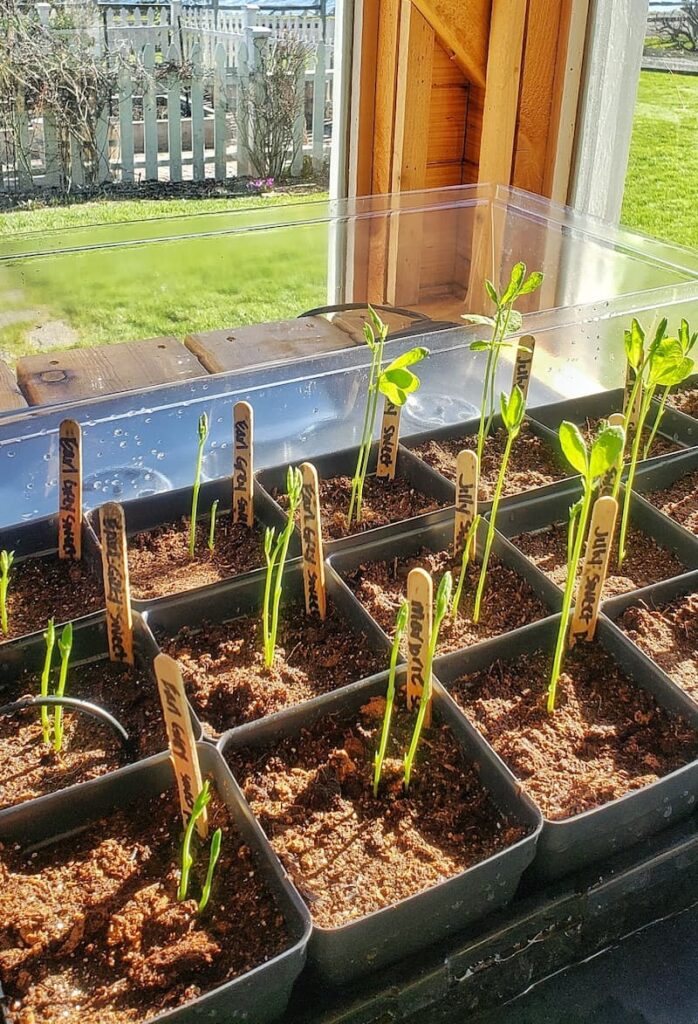
Can All Flowers Be Started Indoors?
While many flowers can be started indoors to get a head start on the growing season, other flowers need the direct sow approach.
The ability to start flowers indoors depends on several factors, including the plant’s growth habits, root system, and sensitivity to transplanting.
Here are some things to consider when choosing to start flowers indoors versus sowing directly outdoors.
Flowers Suitable for Indoor Starting
Flowers Best Sown Directly Outdoors
General Considerations for Choosing Indoor Seed Starting
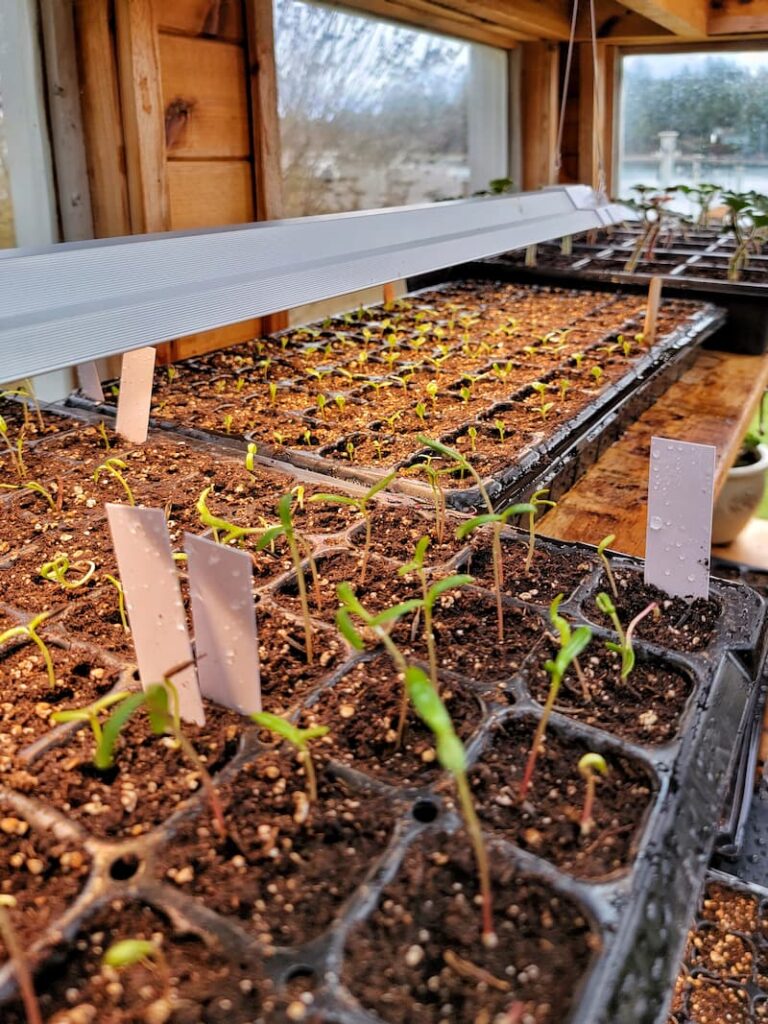
When Should I Start My Flower Seeds Indoors?
The timing for starting flower seeds indoors largely depends on your local climate and the specific requirements of the plants you intend to grow.
The goal is to have your seedlings ready to transplant outdoors after the danger of frost has passed, yet mature enough to survive the transition. Here’s how to determine the best time to start your seeds indoors.
Know Your Last Frost Date
The most important thing you need to know before sowing flower seeds is your area’s expected last frost date.
This date varies depending on your geographic location. You can find this information through local gardening clubs, agricultural extension offices, or online gardening resources.
Read seed Packet Instructions
Most seed packets provide a timeline for starting seeds indoors, usually showing how many weeks before the last frost date.
These instructions consider the average germination time and growth rate of the seedlings.
Count Backwards
Once you know the last frost date and the recommended start time from the seed packet, count backward from the frost date to determine when to sow your seeds indoors.
For example, if your last frost date is April 30 and your seeds should be started six weeks before the last frost, you would start your seeds around mid-March.
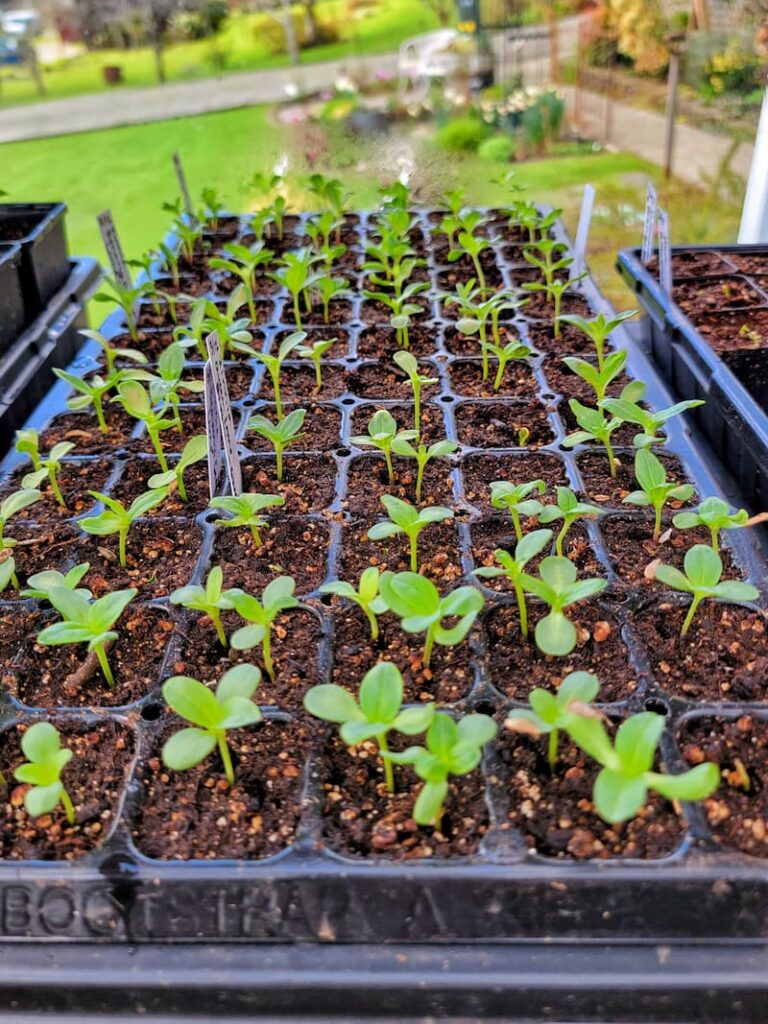
Consider the Plant’s Growth Rate
Fast-growing plants like marigolds and zinnias may need only 4-6 weeks indoors before they’re ready to transplant.
Slower-growing plants like petunias and impatiens might benefit from 8-10 weeks of indoor growth before moving outside.
Prepare for Variability
Weather can be unpredictable, so it’s wise to monitor local weather forecasts as your transplant date approaches.
If an unexpected frost is predicted, you may need to delay transplanting or protect your seedlings outdoors with covers.
Record and Adjust
Keep a gardening journal to record when you start your seeds and how well they adapt to transplanting. Over time, you’ll fine-tune the timing based on your specific conditions and experiences.
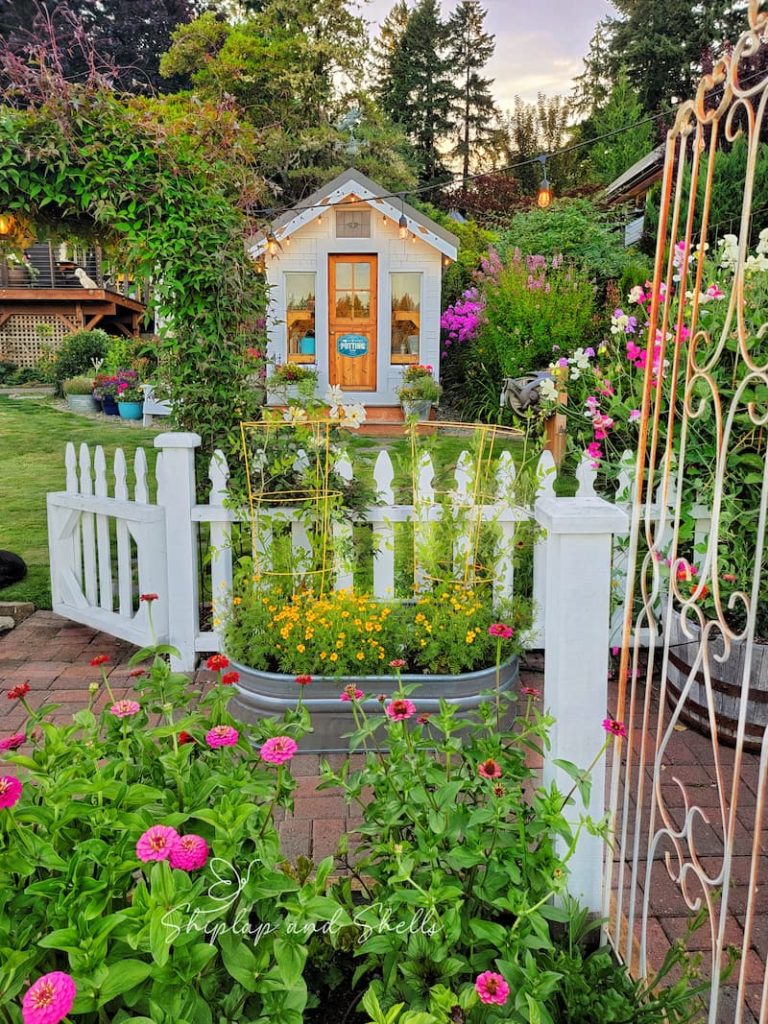
Garden Supplies and Tools
Check out my favorite garden supplies and tools for the growing season. Whether you’re looking for potting soil or deer repellent, you’ll find what I use in my own garden.
Final Thoughts for Easy Flowers to Grow Indoors from Seed
By selecting easy-to-grow flower varieties, using the right supplies, and following basic indoor starting techniques, even new gardeners can enjoy a beautiful flower garden with minimal effort.
The key to success is understanding the specific needs of each plant, timing your seed starting correctly, and being patient as you watch your garden come to life.
I hope you found favorites from my “Easy Flowers to Grow Indoors from Seed” list. Comment below and tell me what you’ll plant in your gardens this growing season.
Be sure to share this blog post link with anyone who may find these gardening tips useful.
Until next time,
Happy Gardening!

I’m a self-taught hobby gardener. Everything I share on my blog is my opinion and what has worked for me.
YOU MAY ALSO
Enjoy These Posts
Follow Me for More Inspiration
Shop my Amazon Storefront, LTK sources, and my favorite home decor, garden, and lifestyle products. When you purchase from one of my links, I earn a small commission, which helps me continue sharing all the content you expect on my blog.
Follow me on Pinterest, Instagram, Facebook, TikTok and LIKEtoKNOW.it. Do you like gardening? Join my Facebook Gardening Tips & Tricks group.
